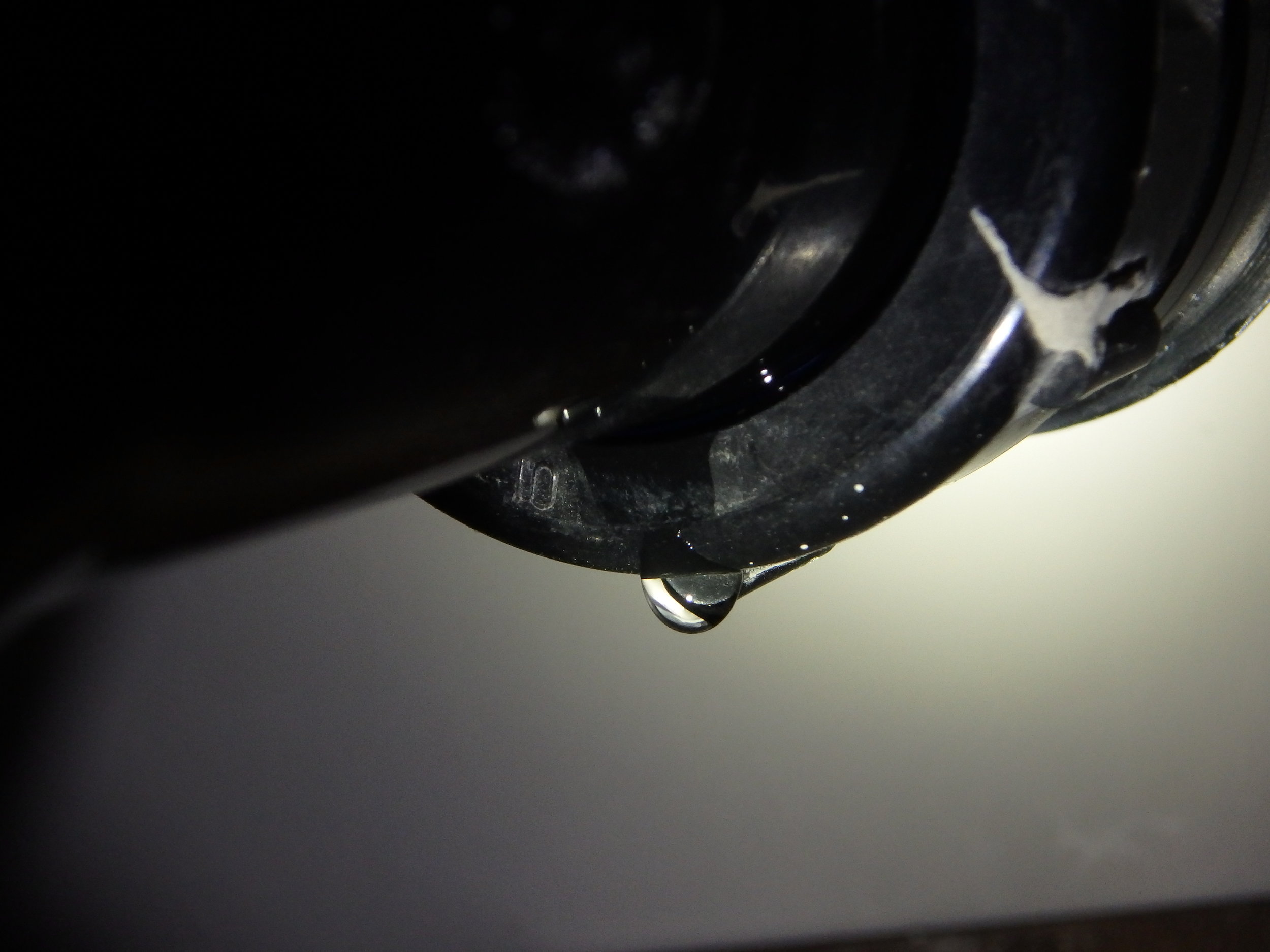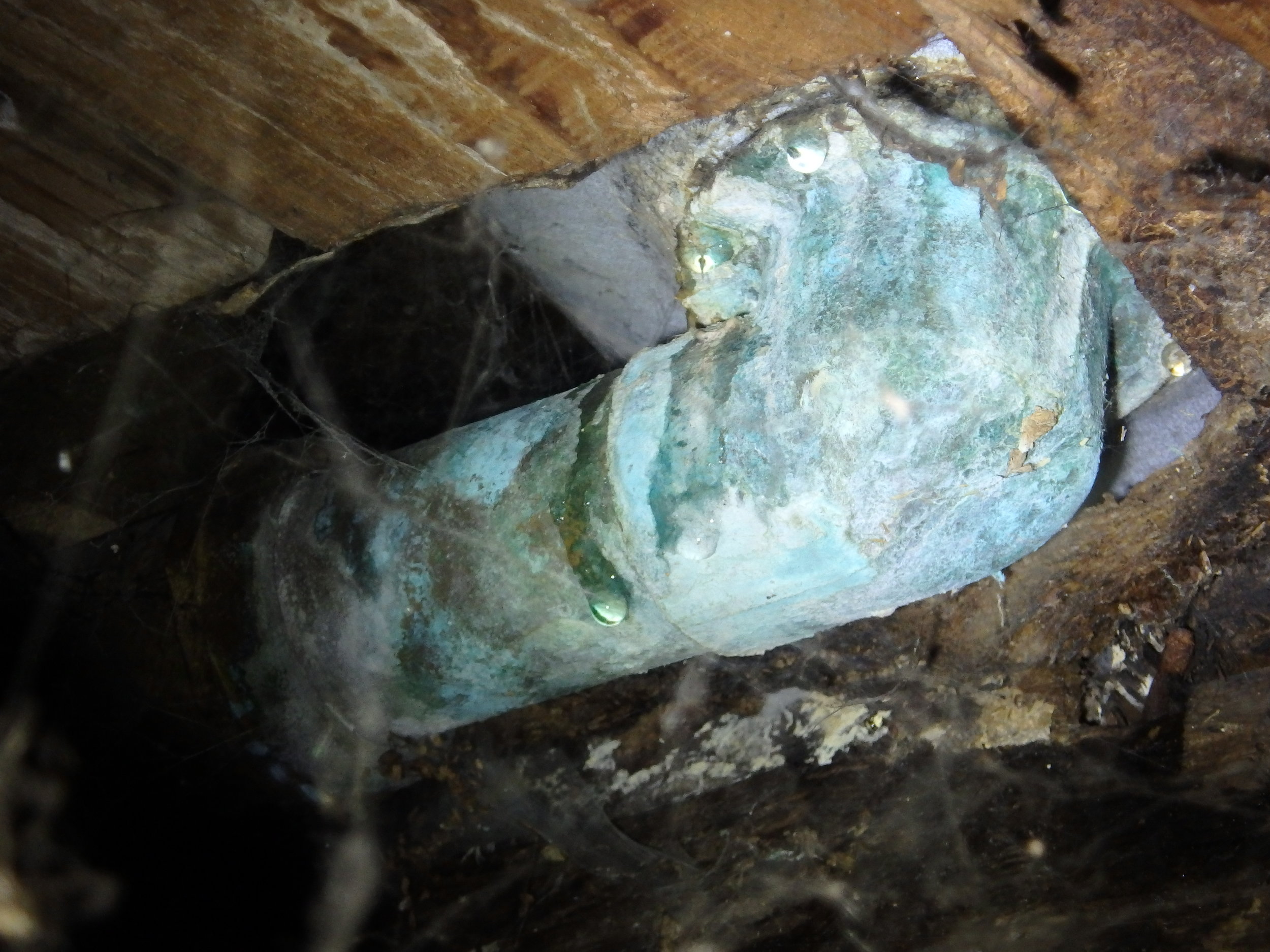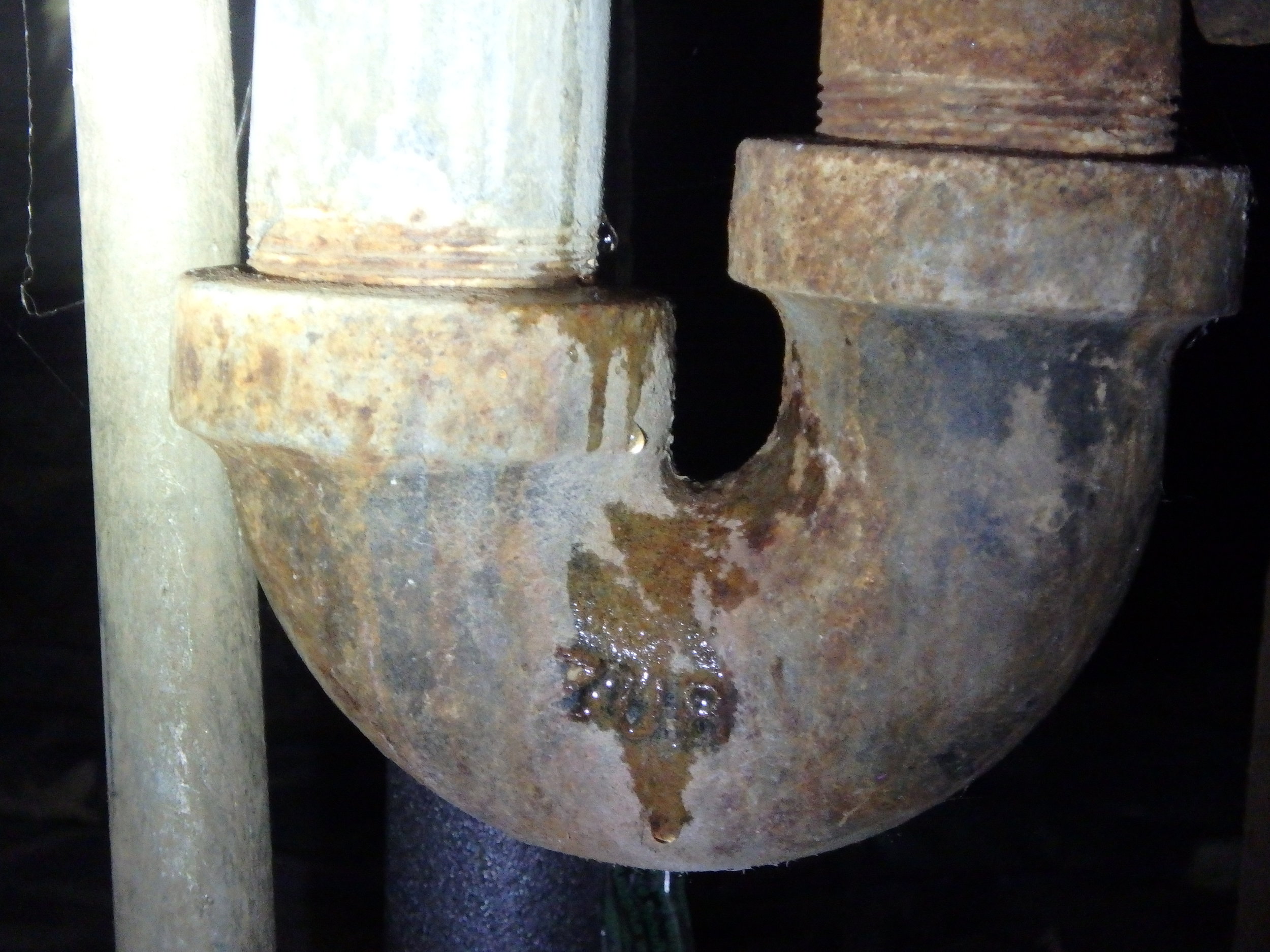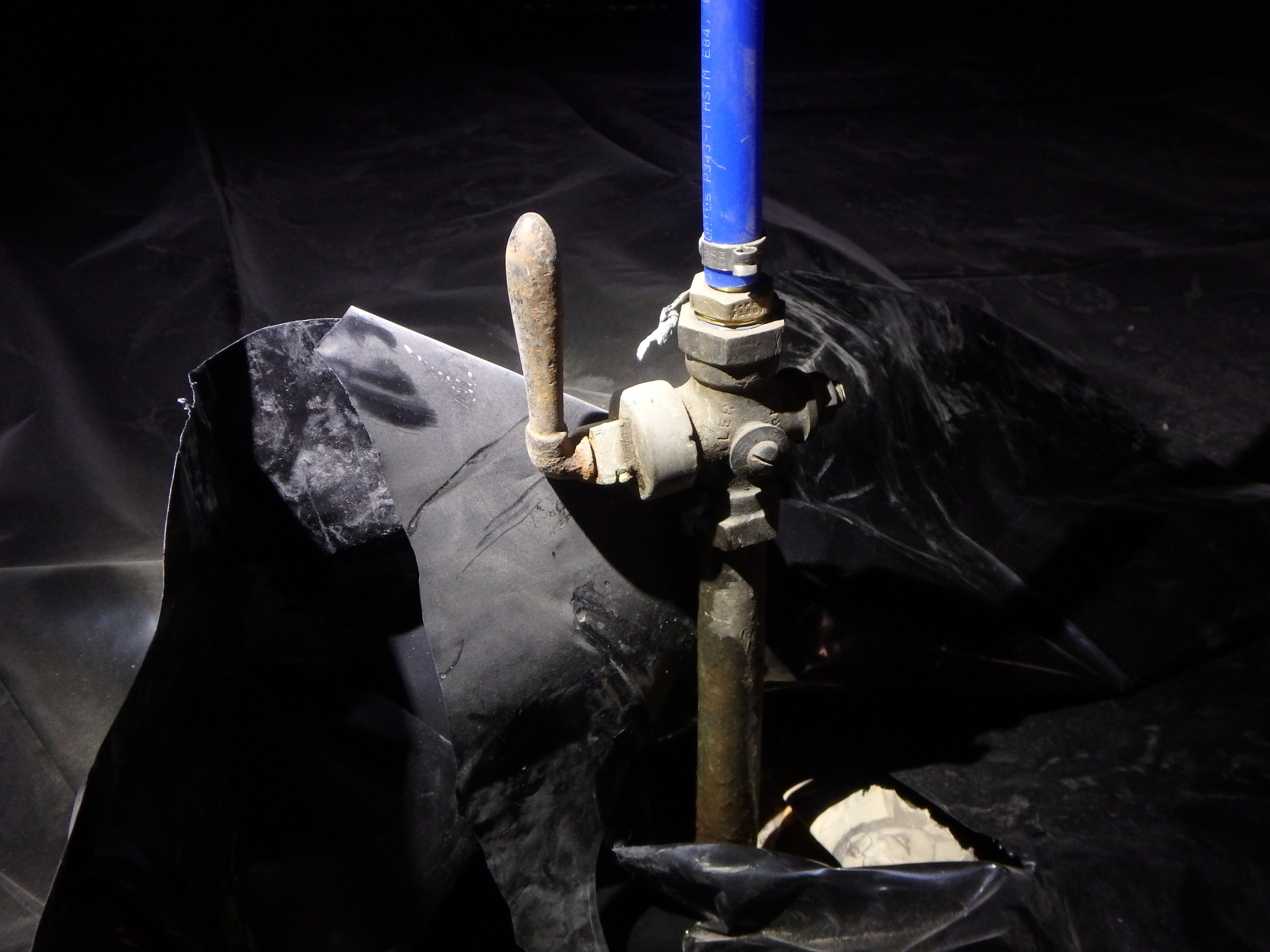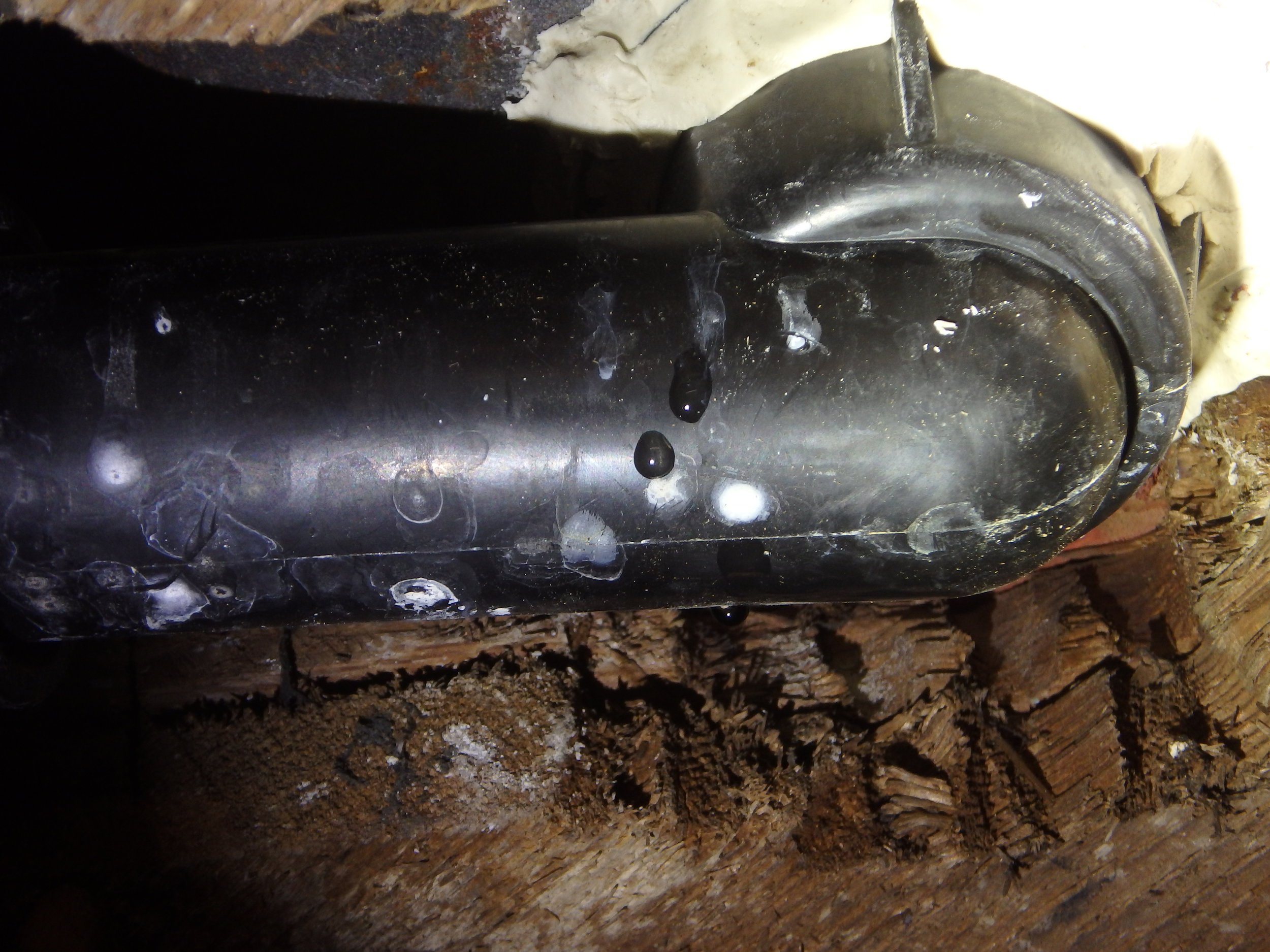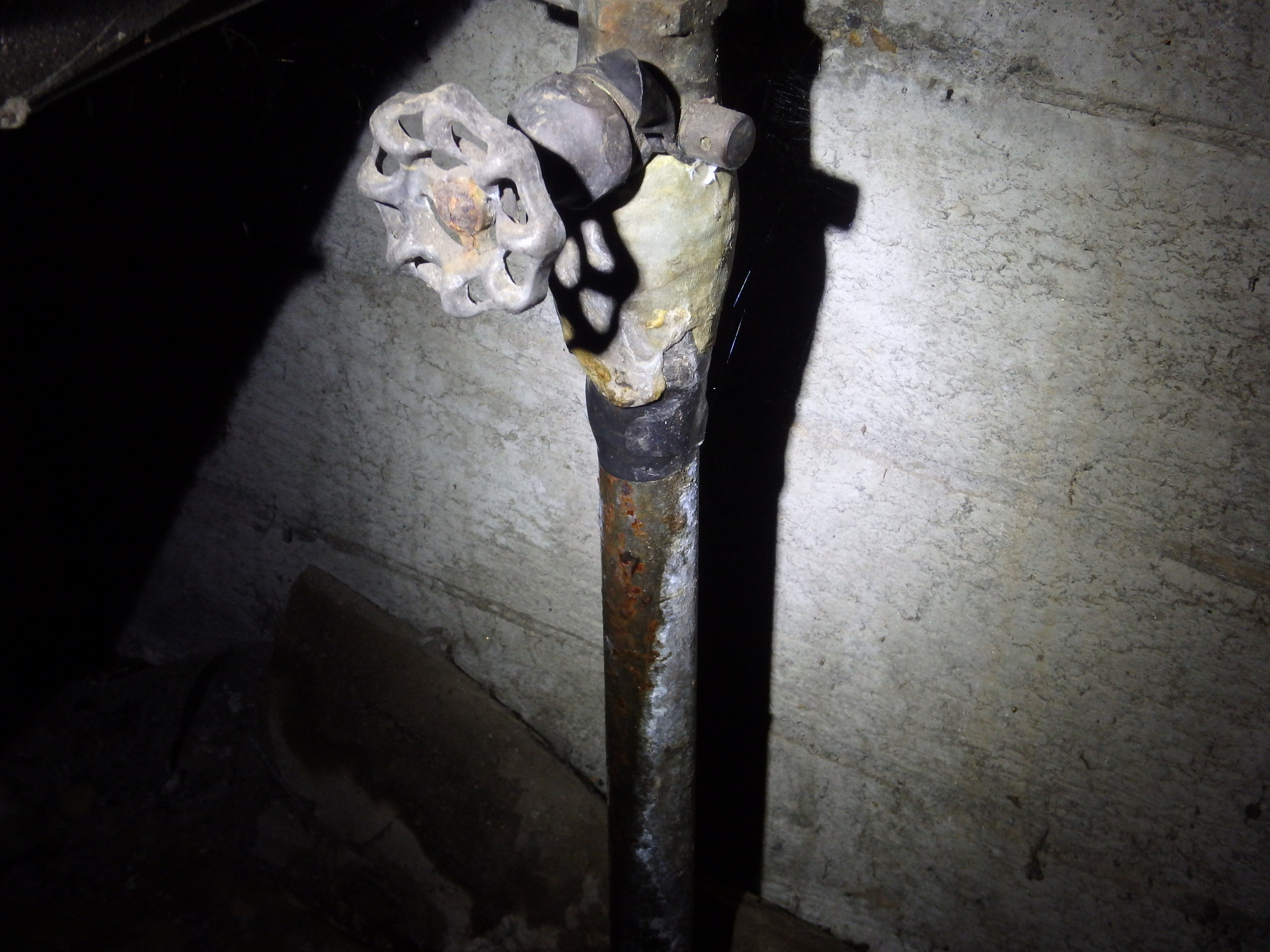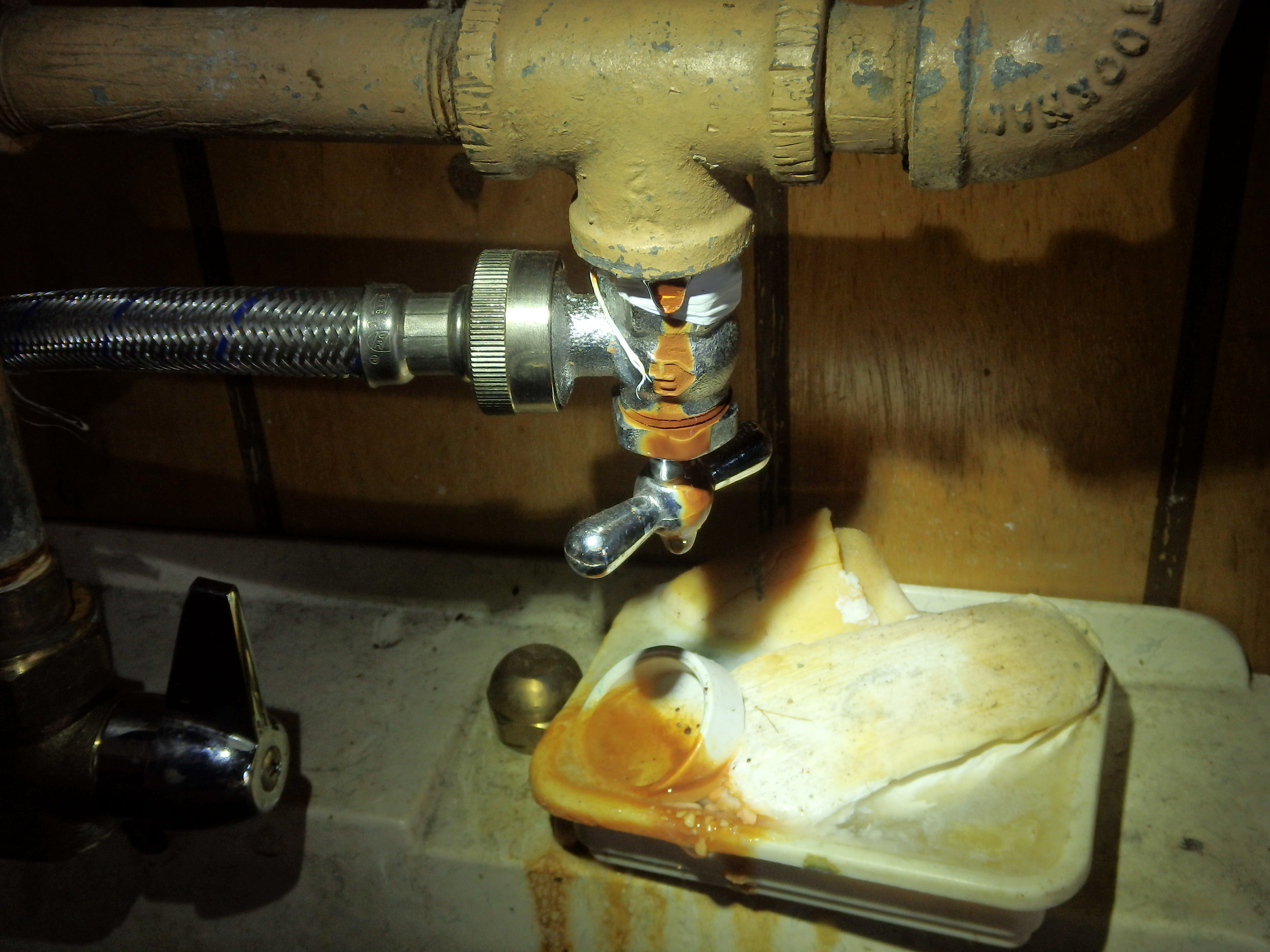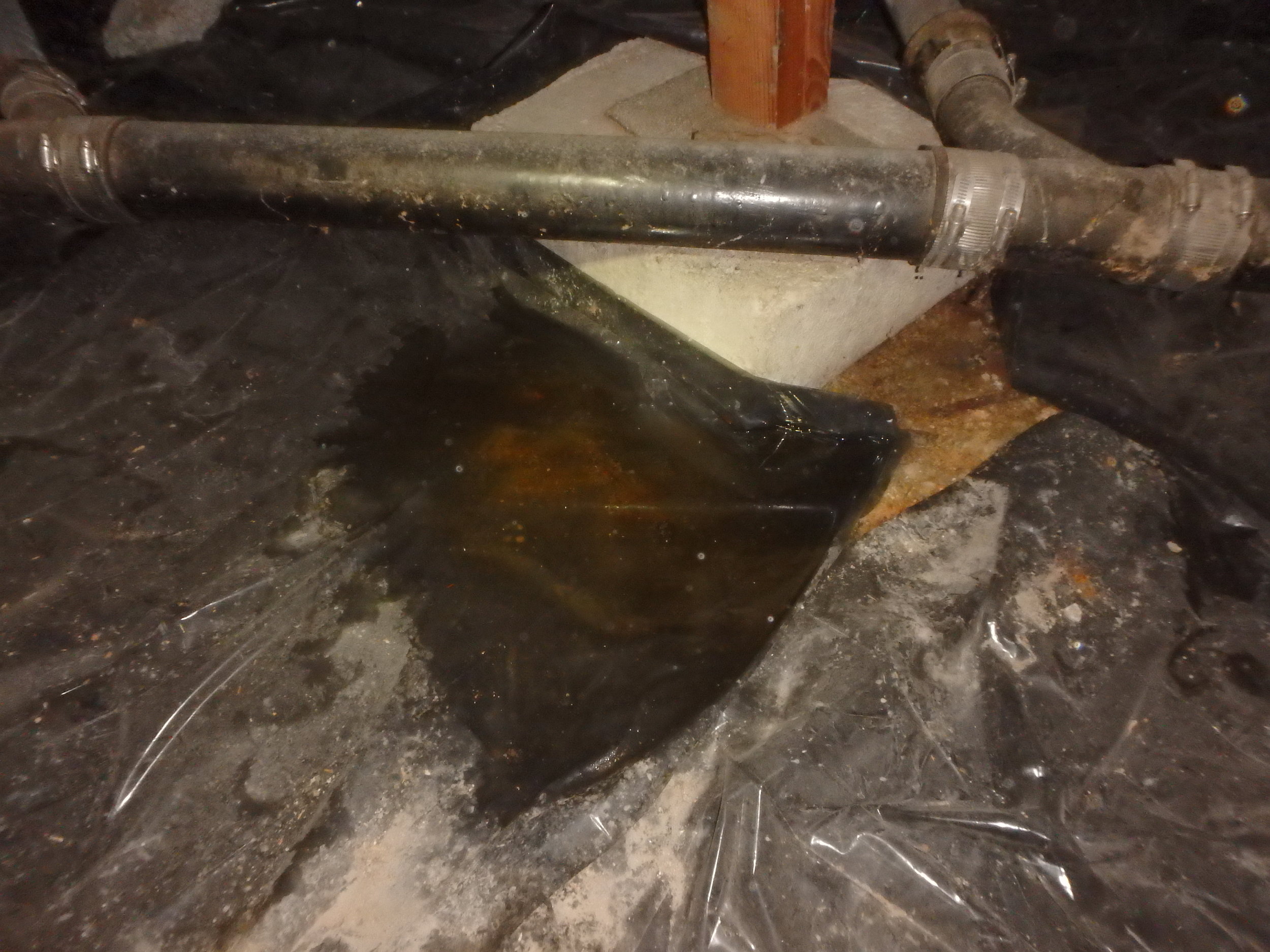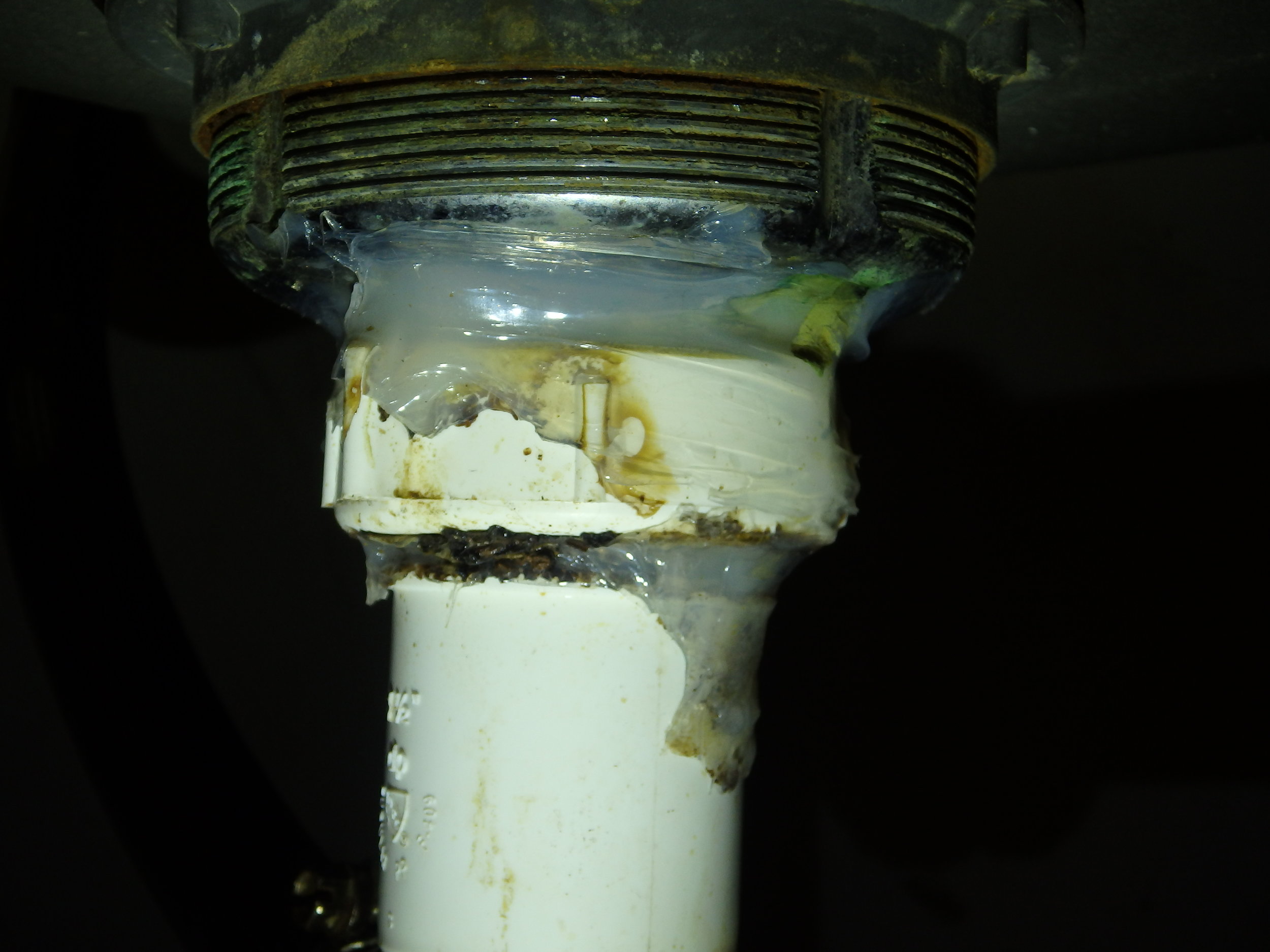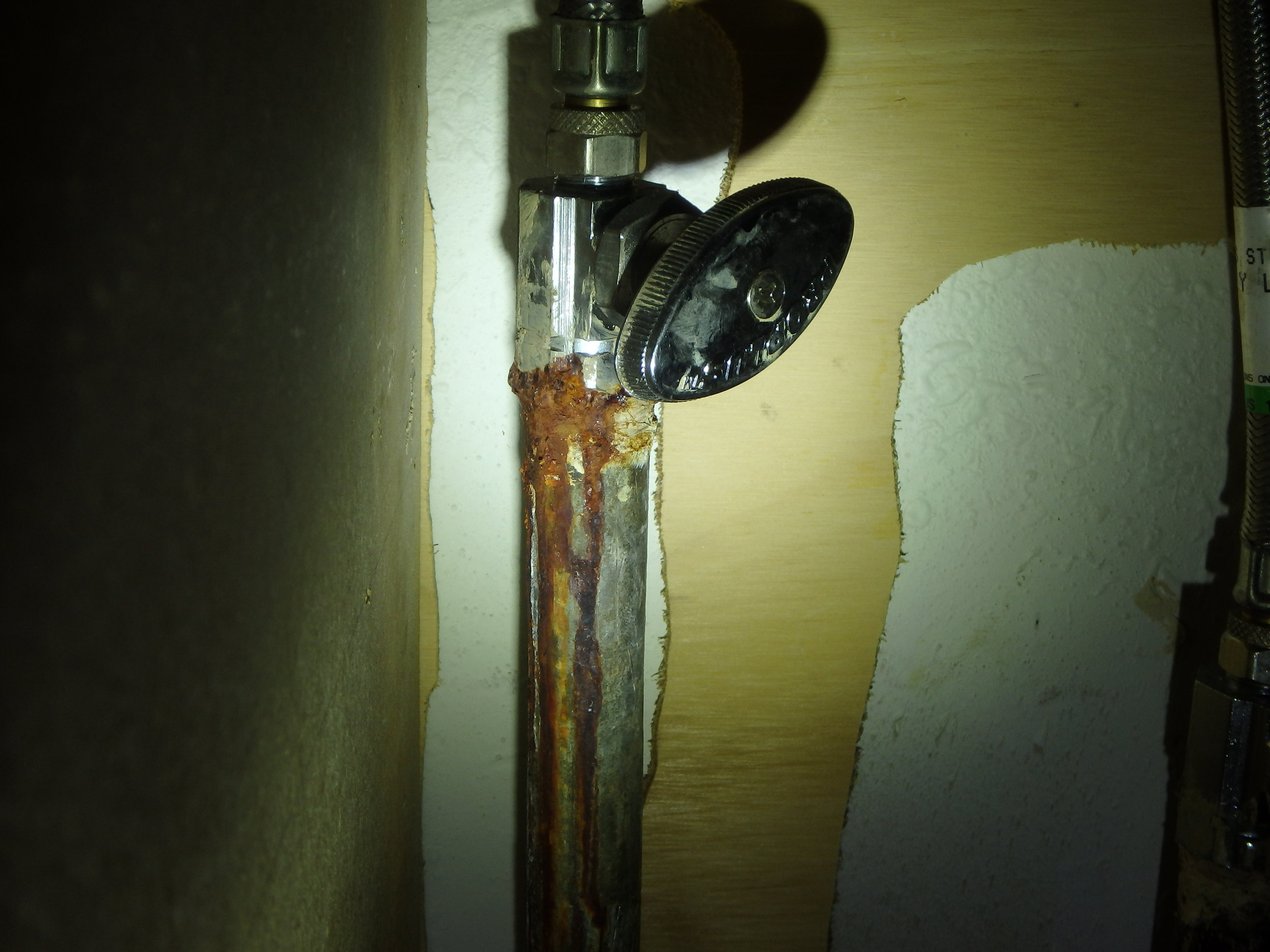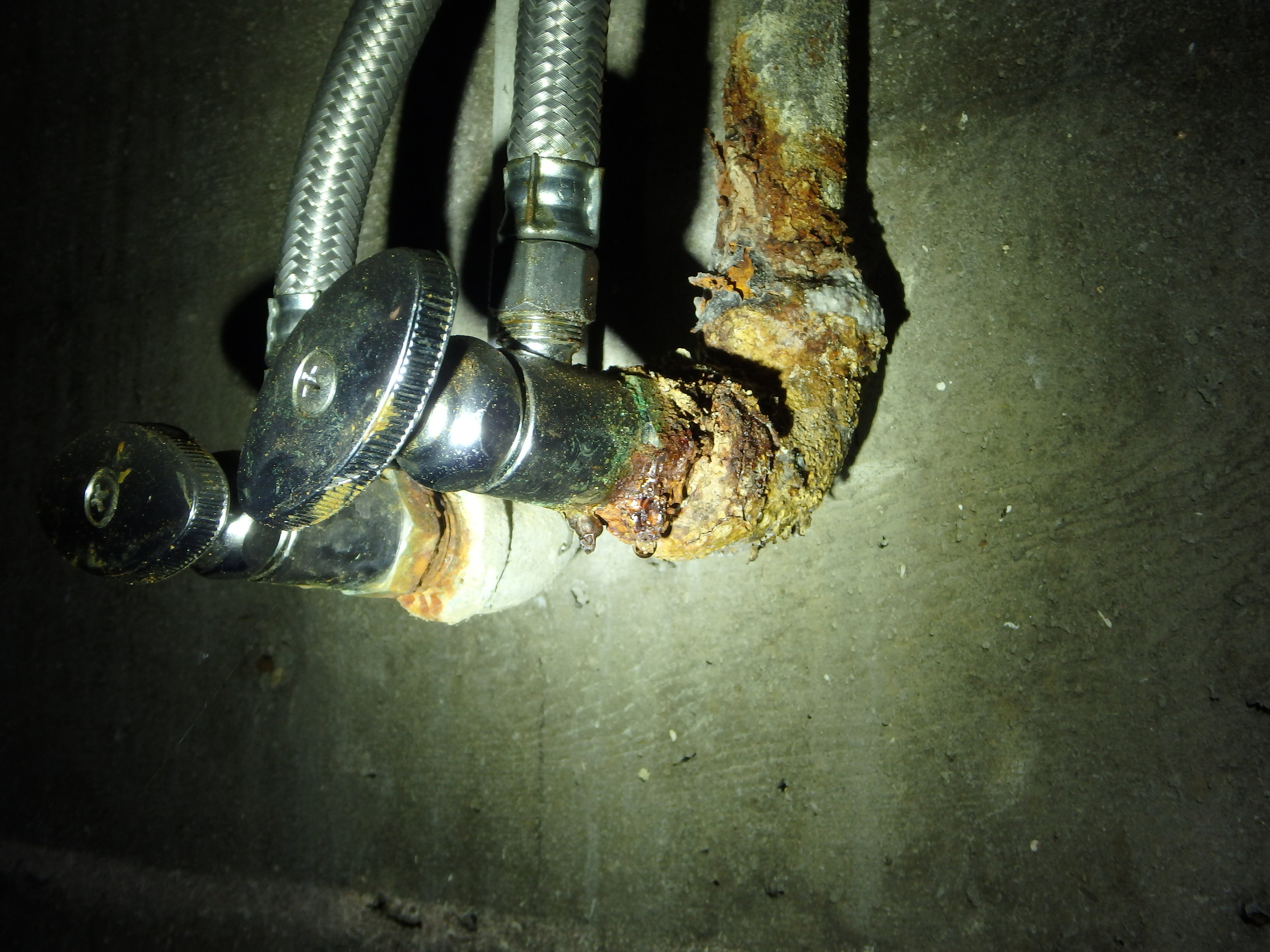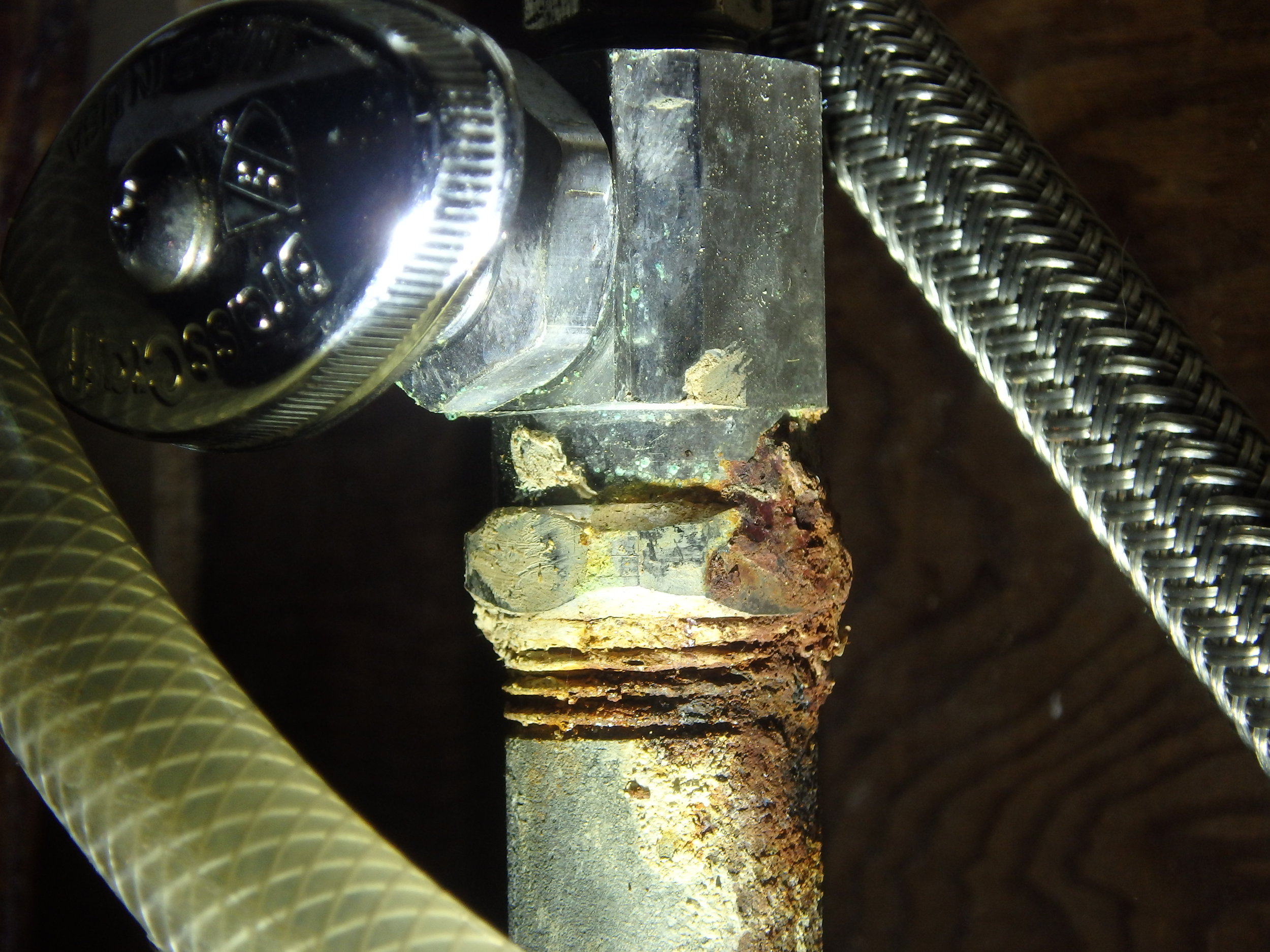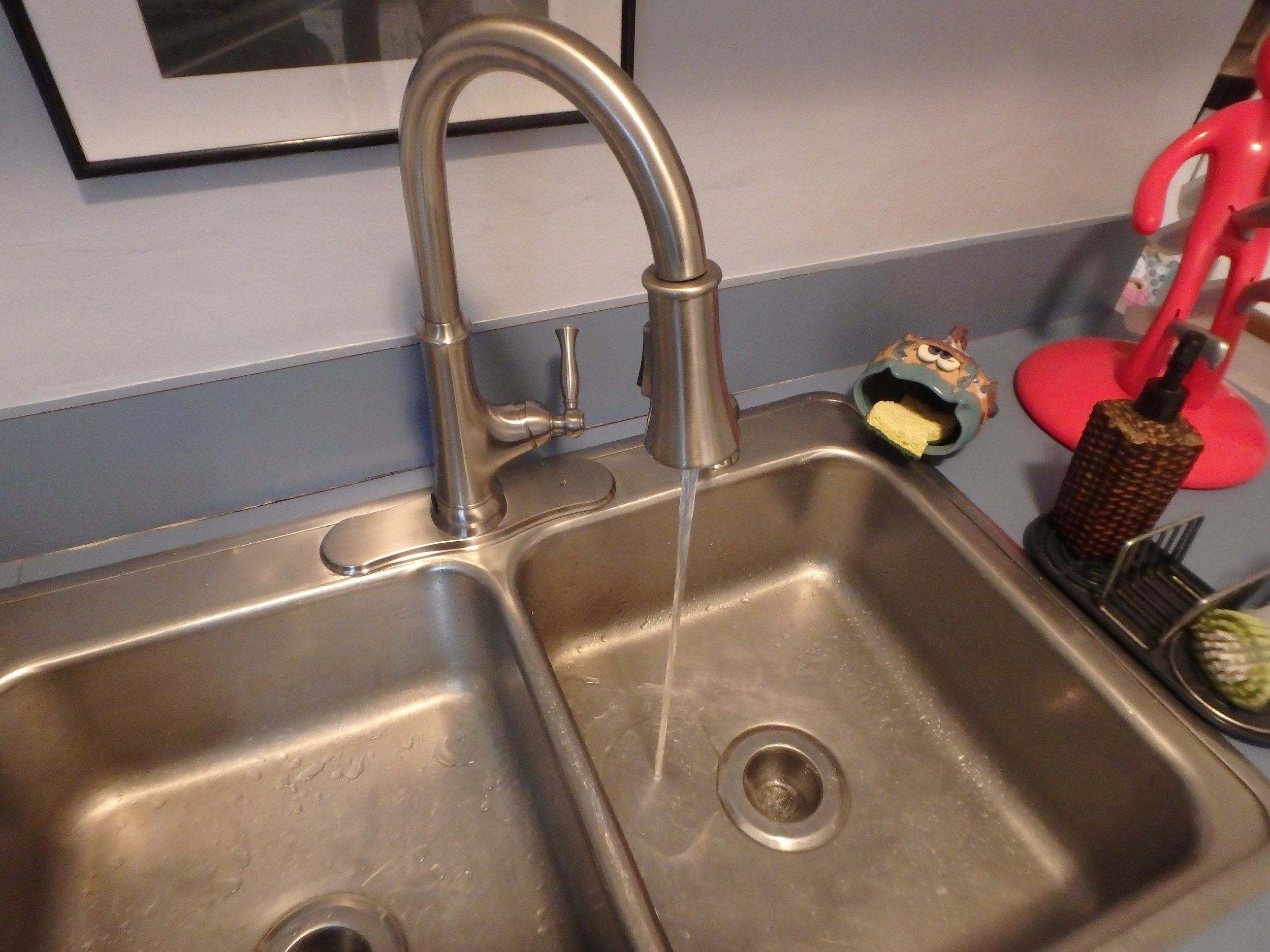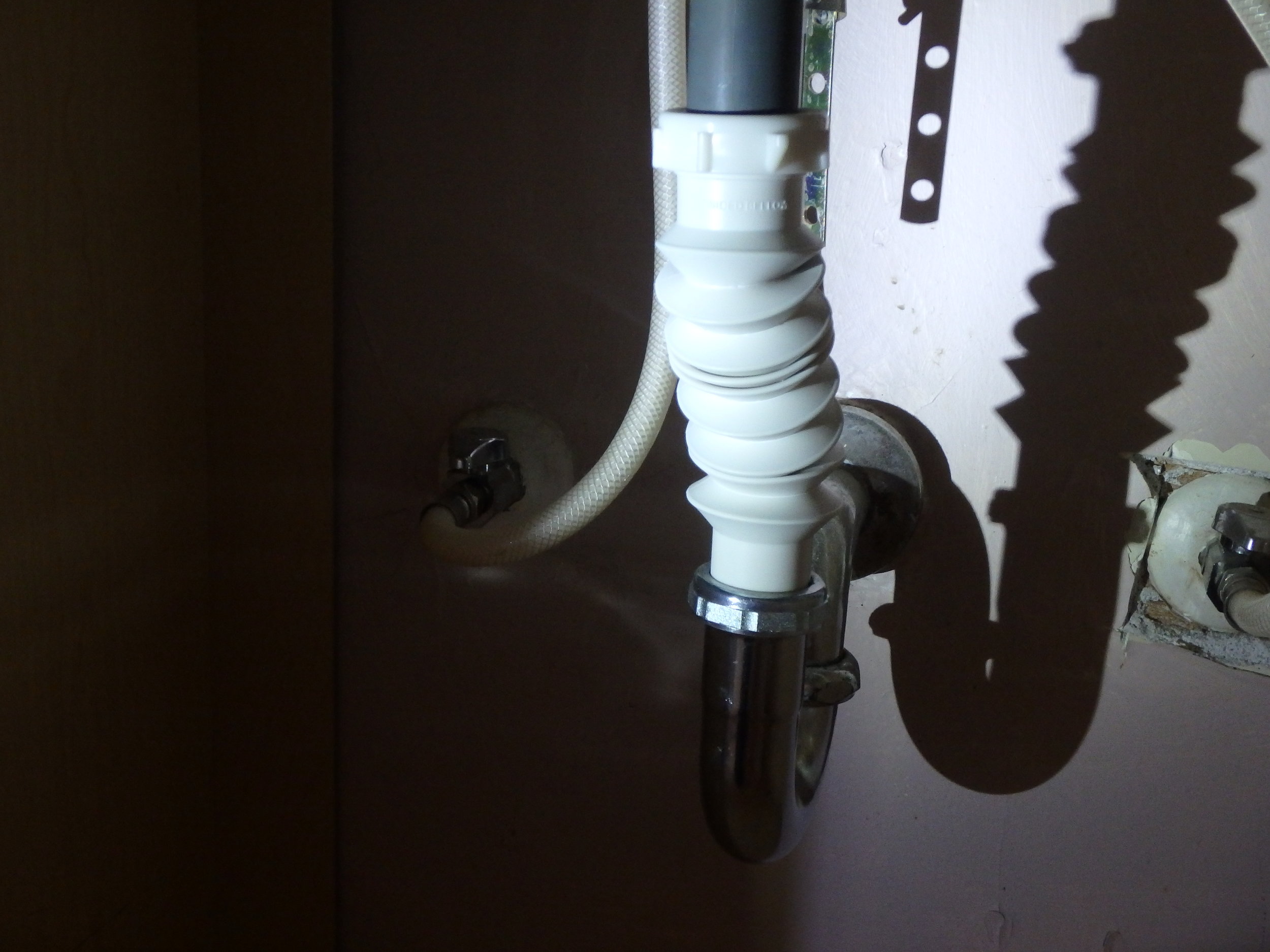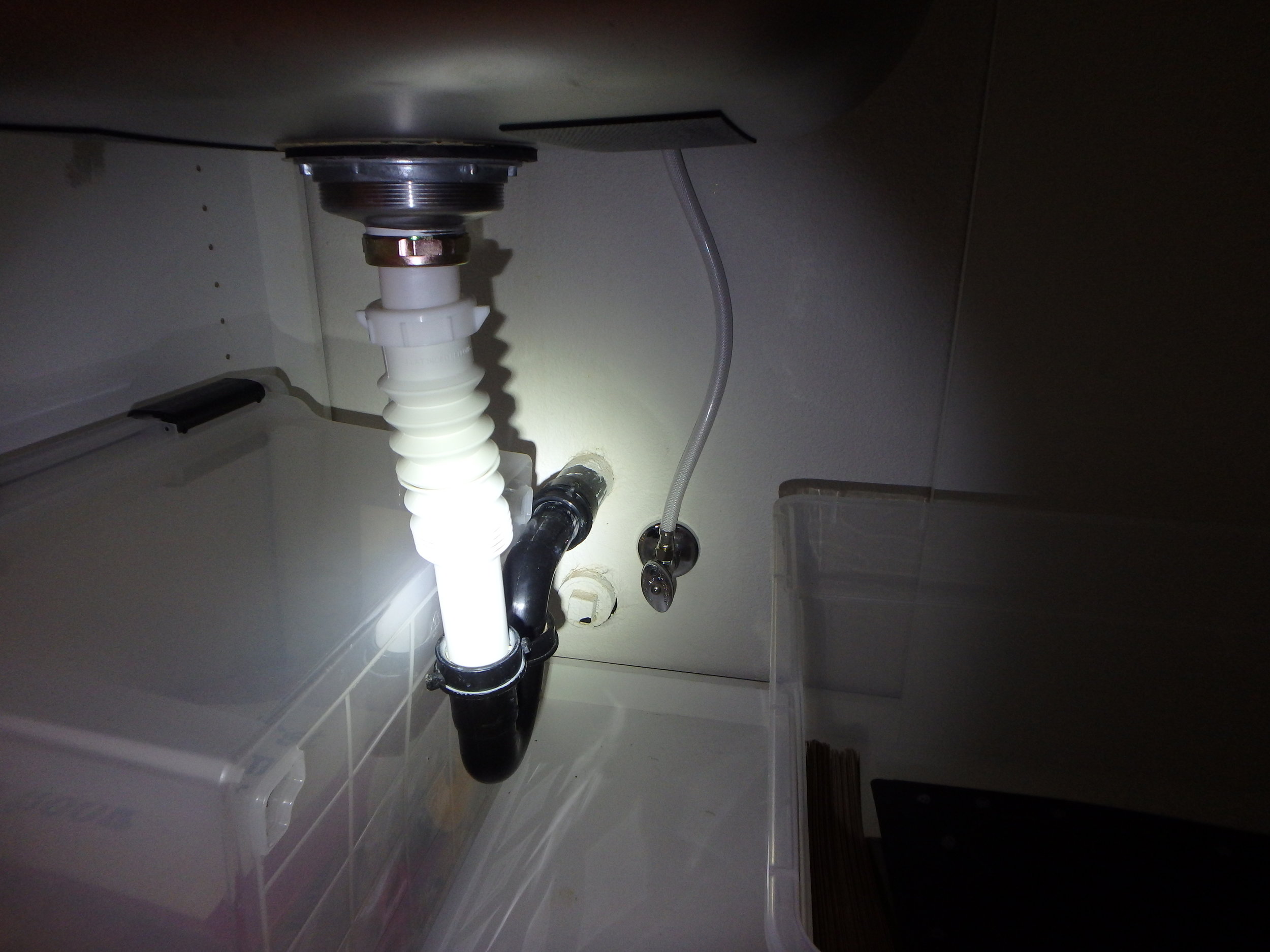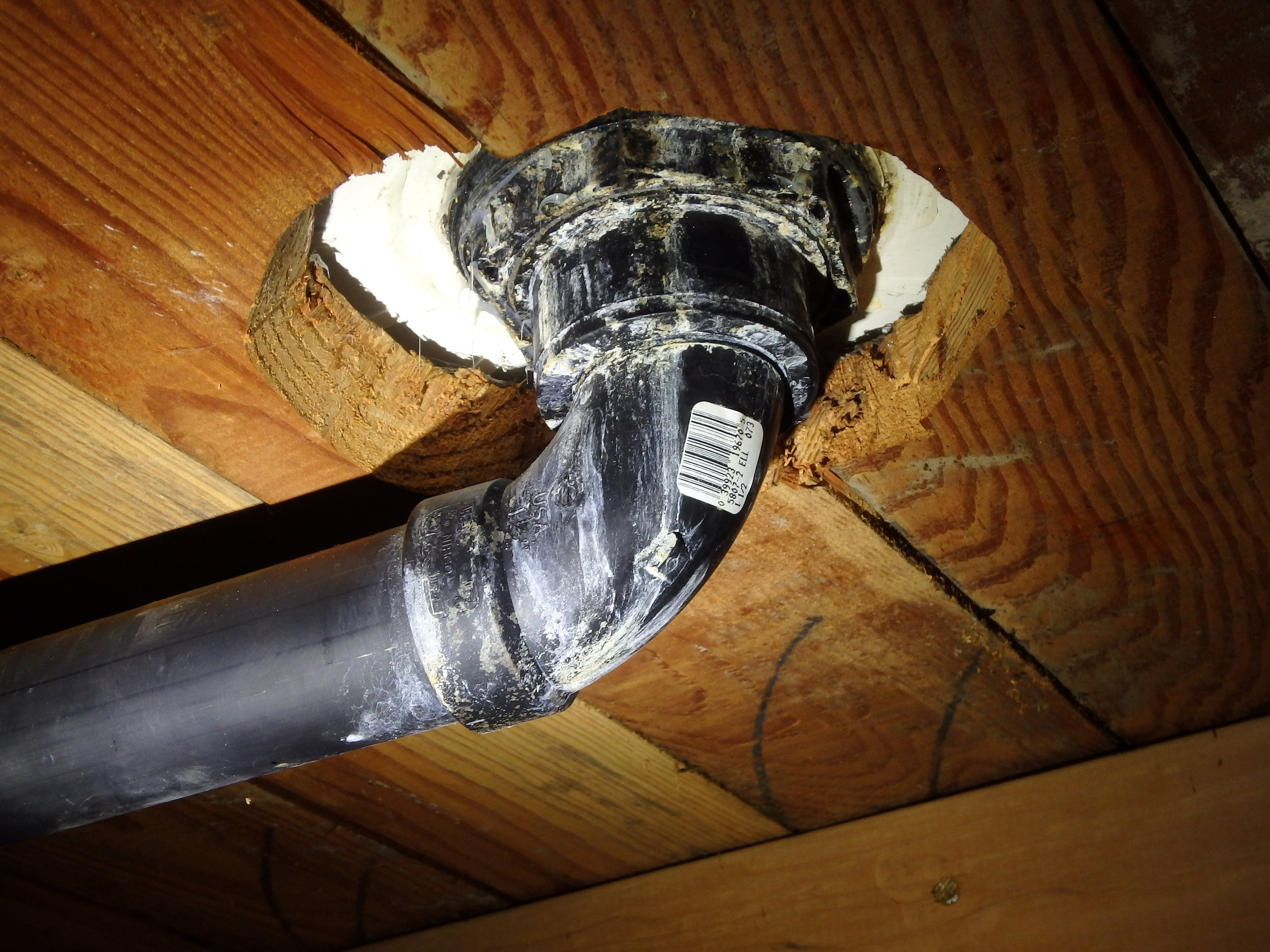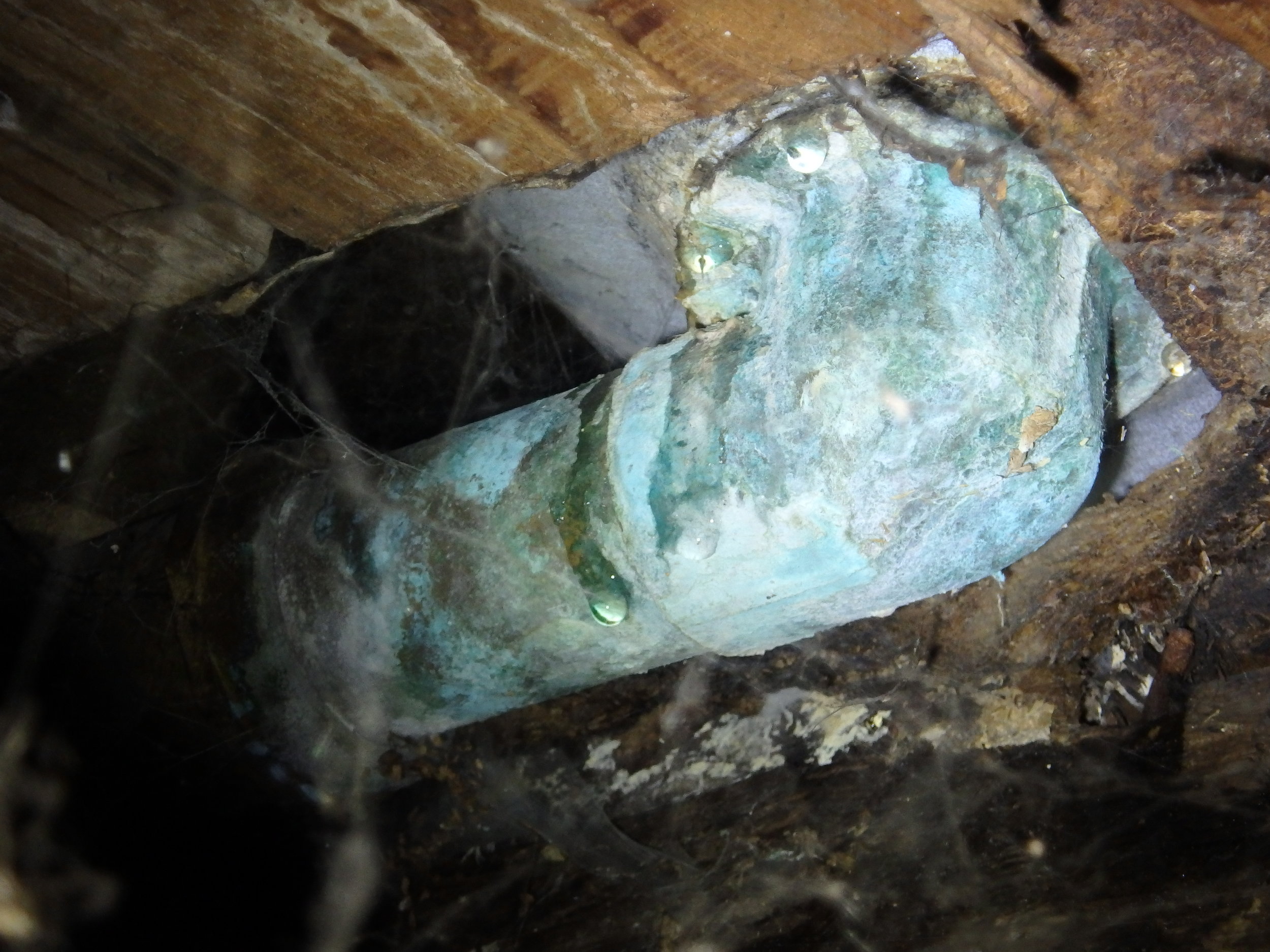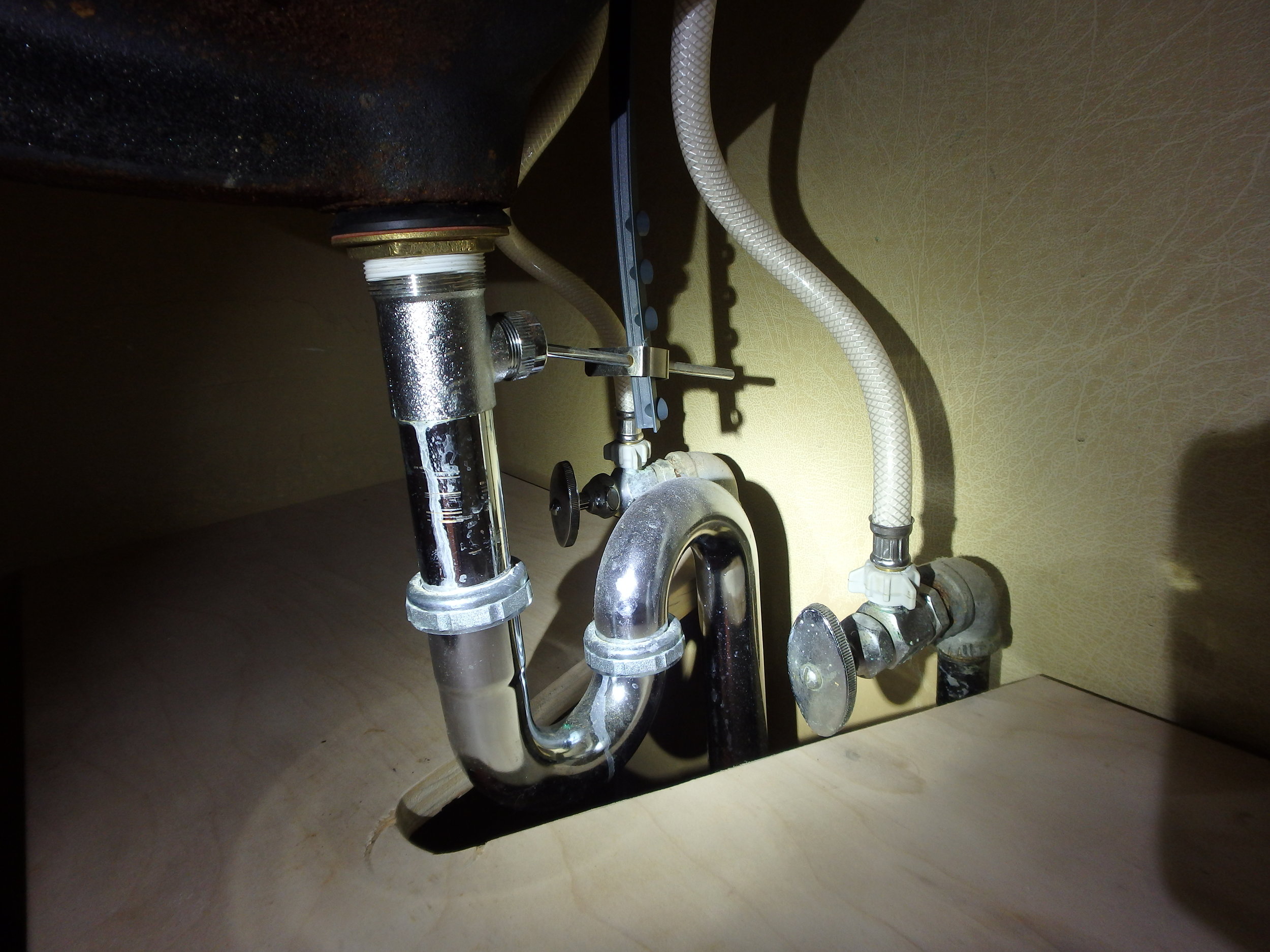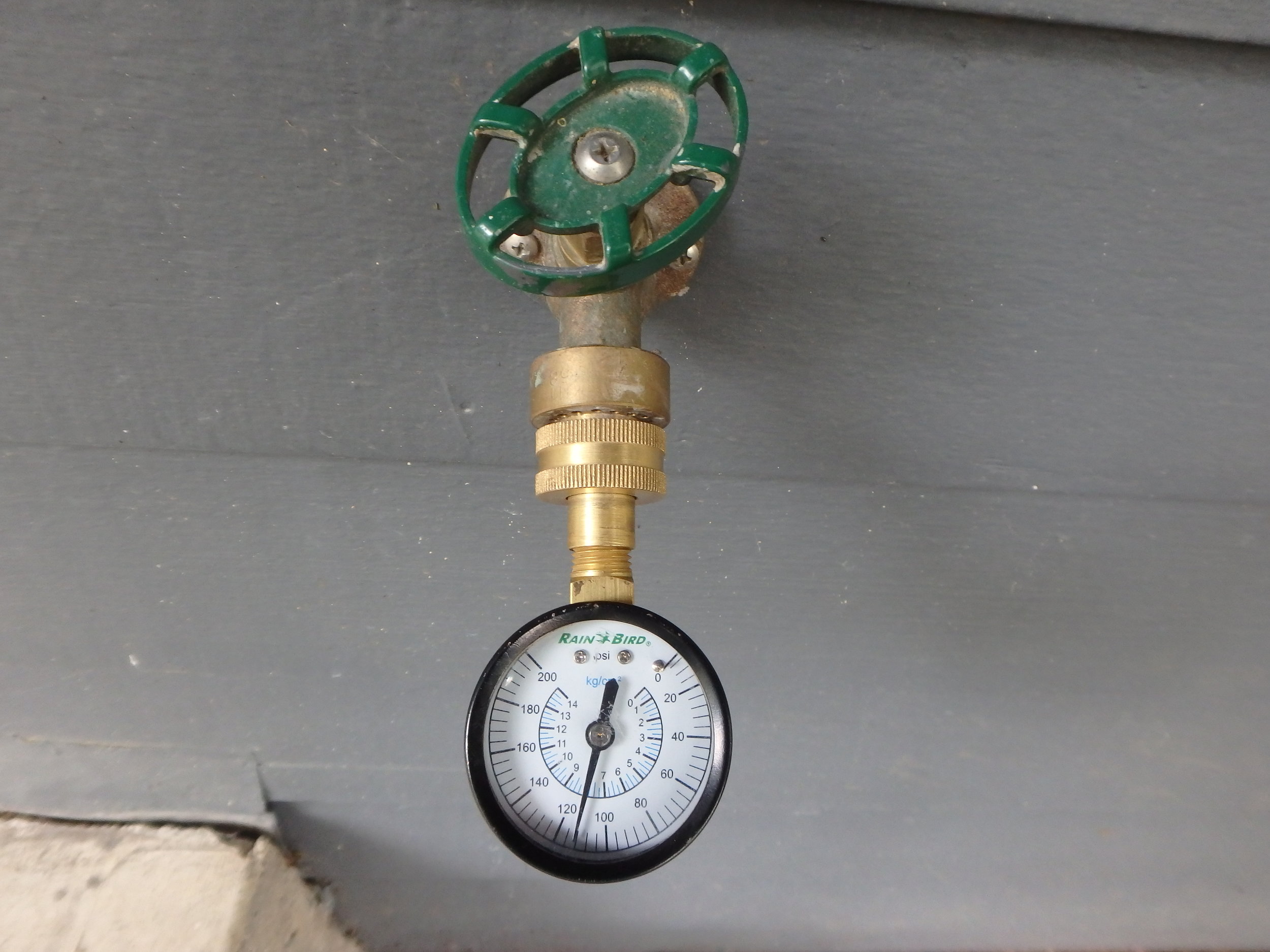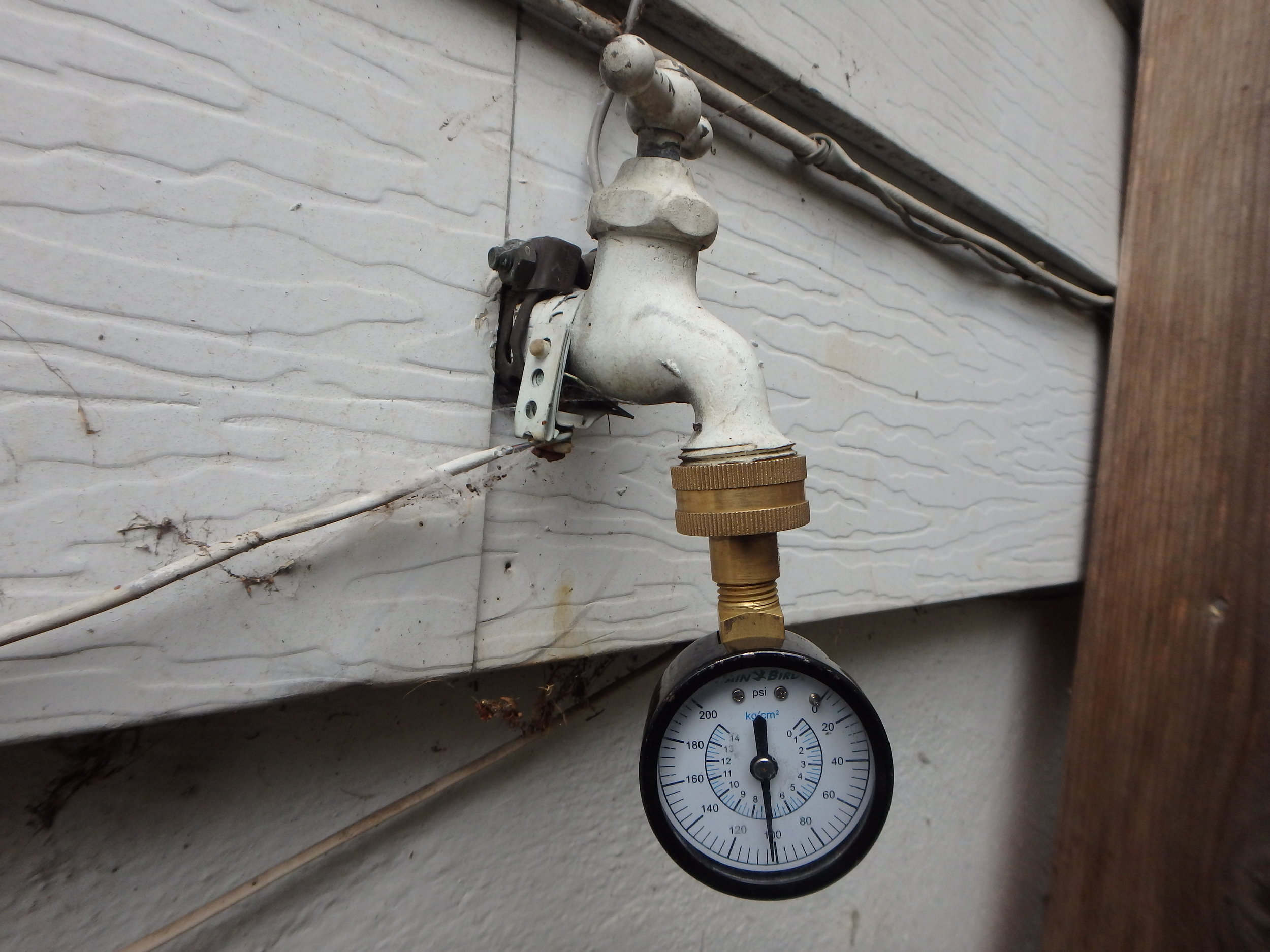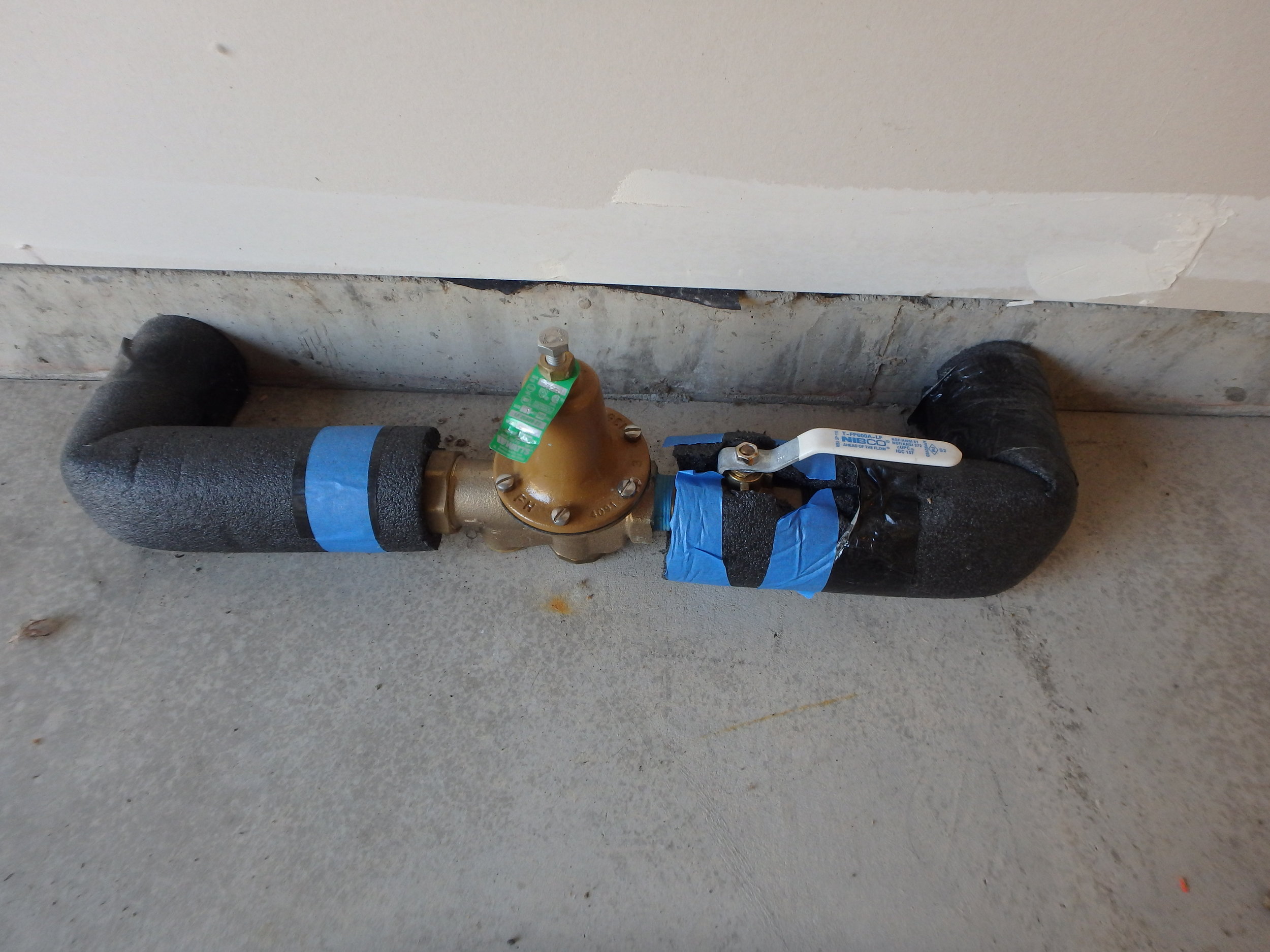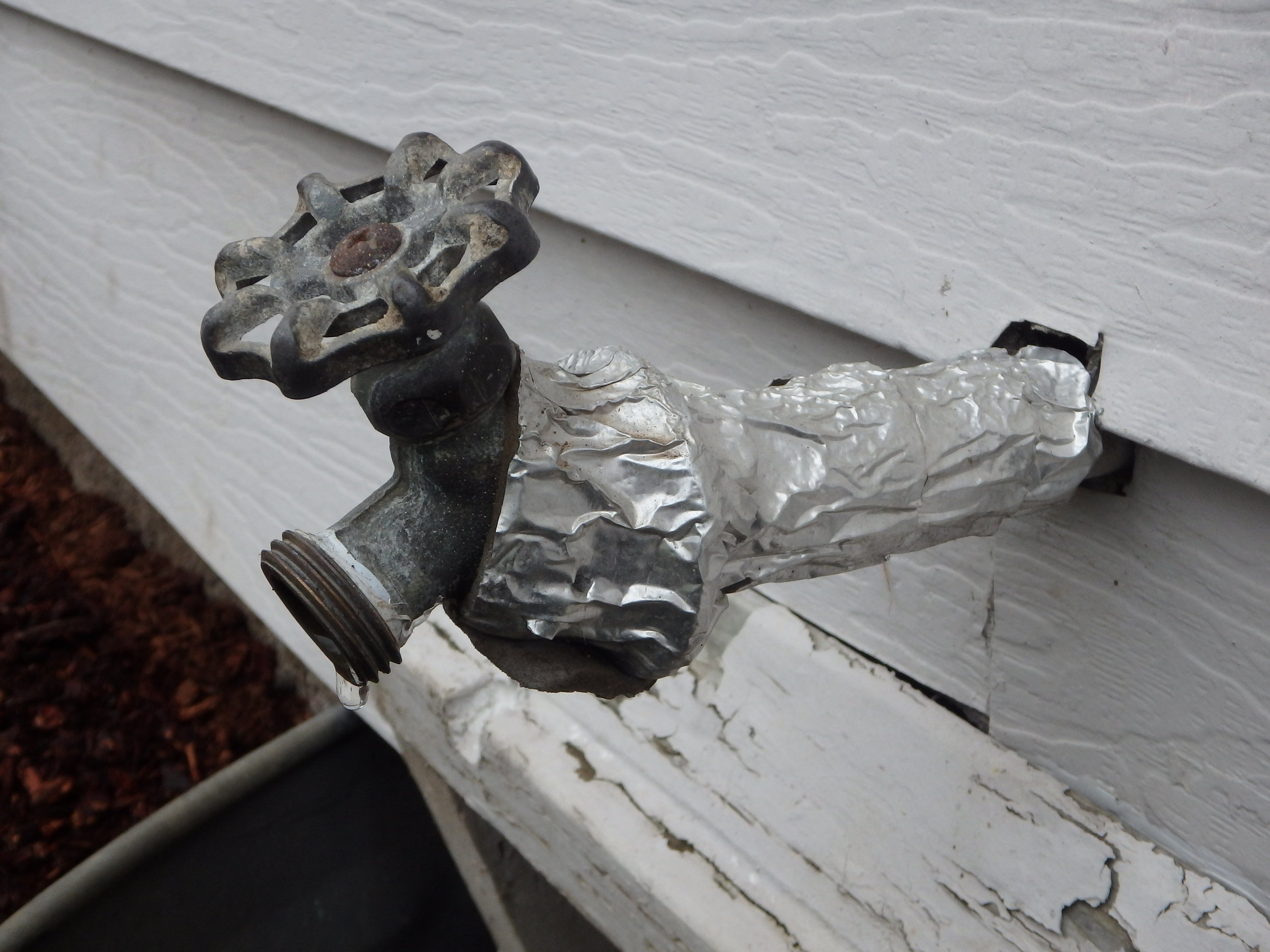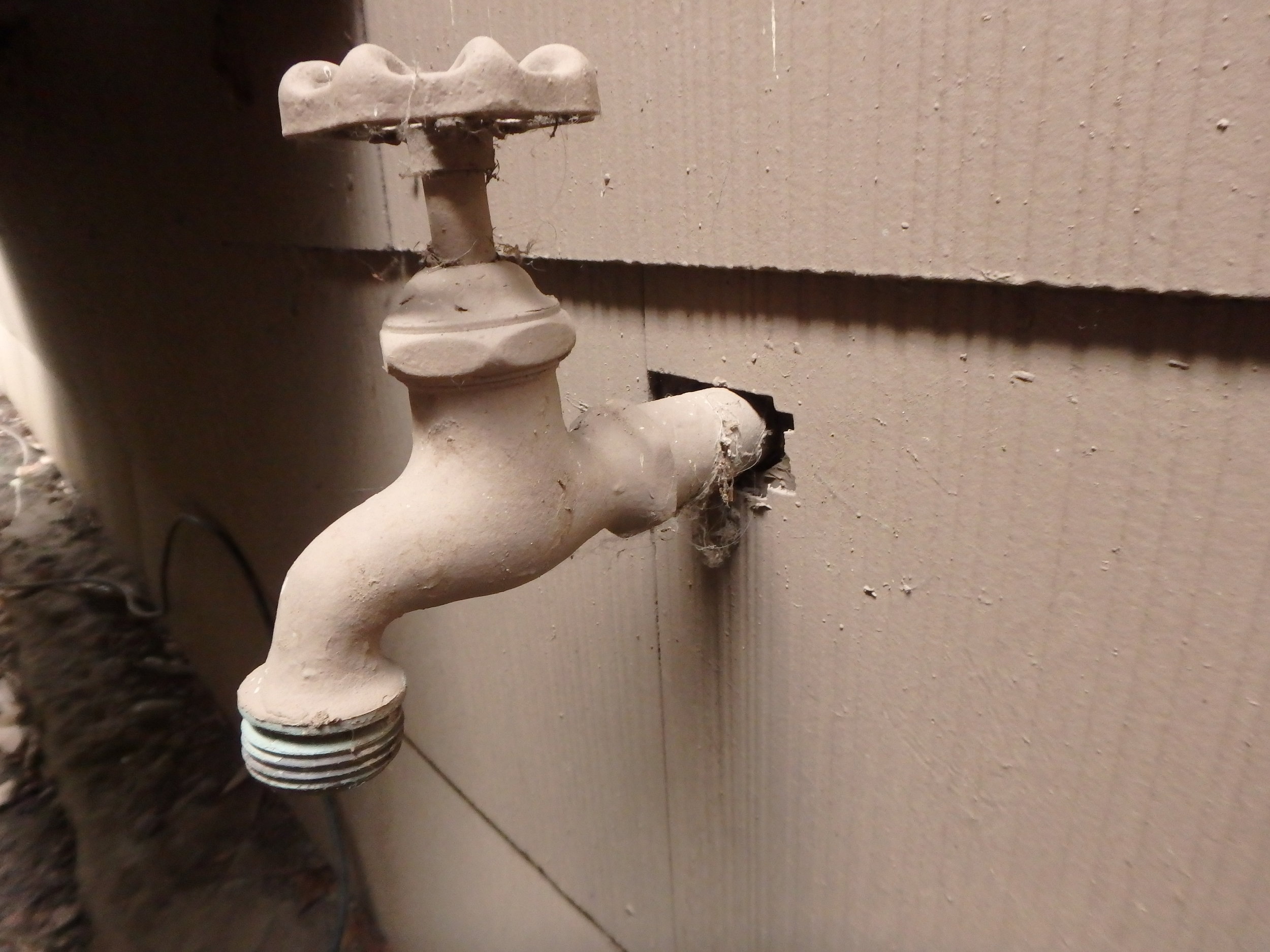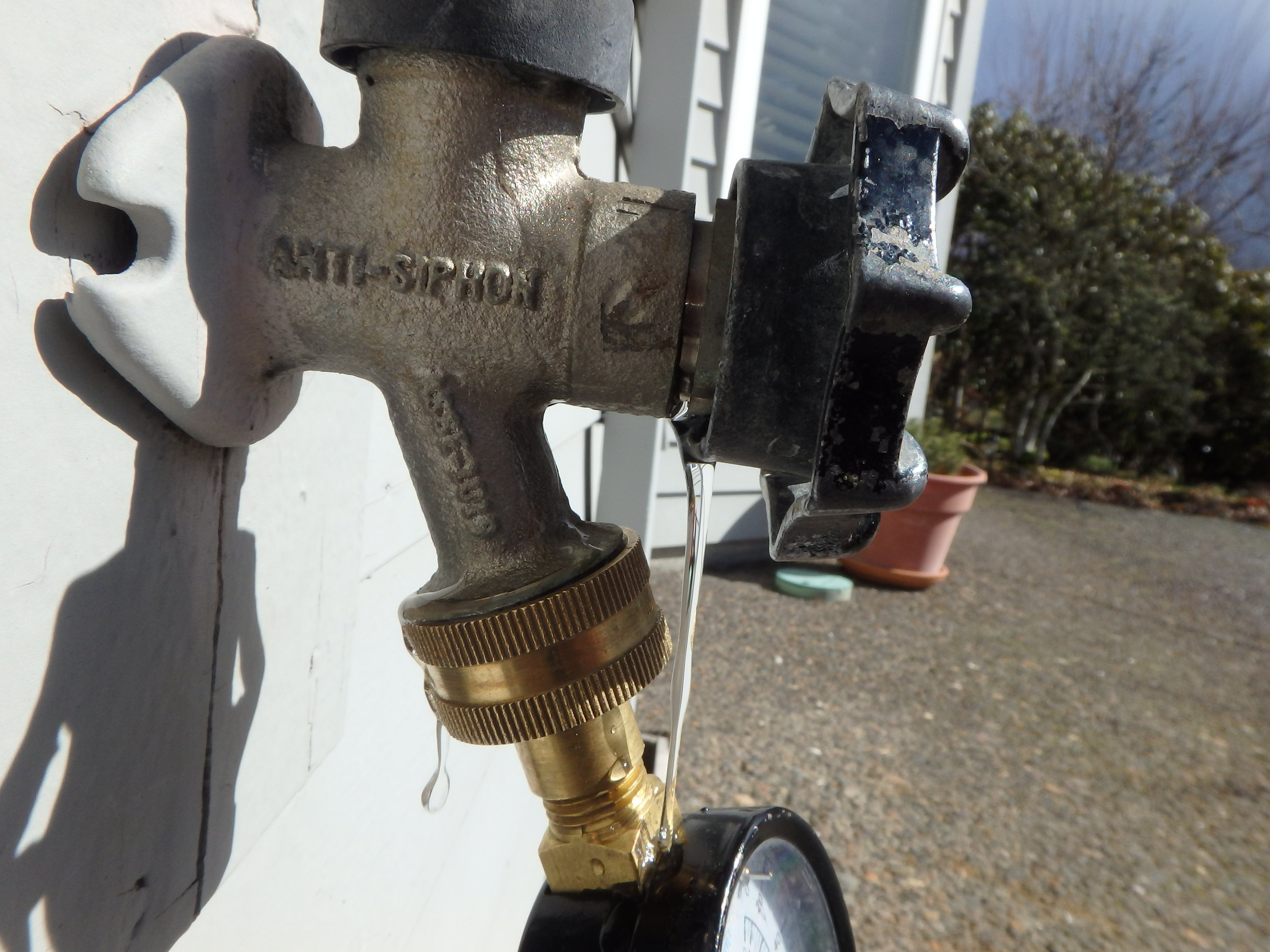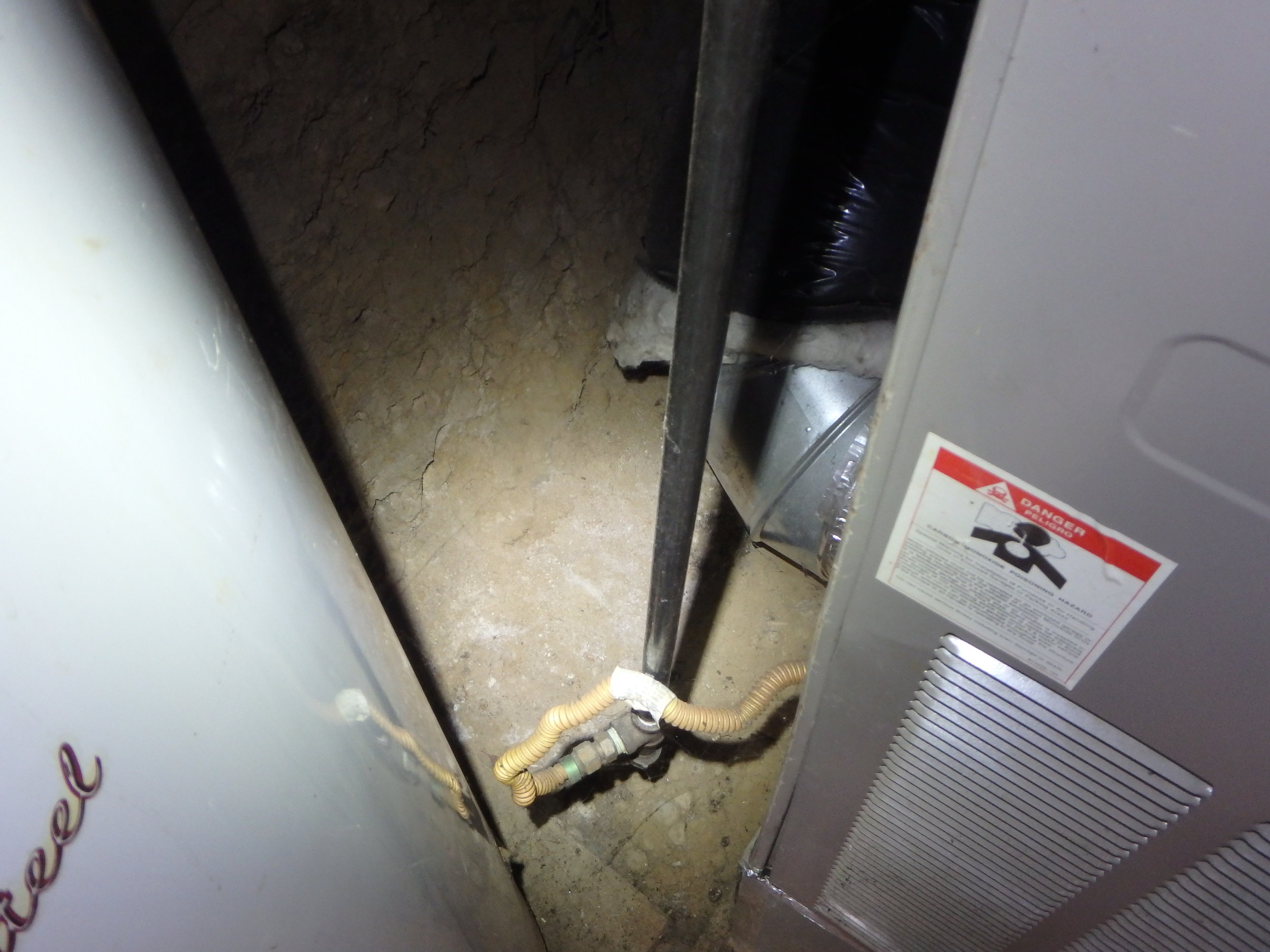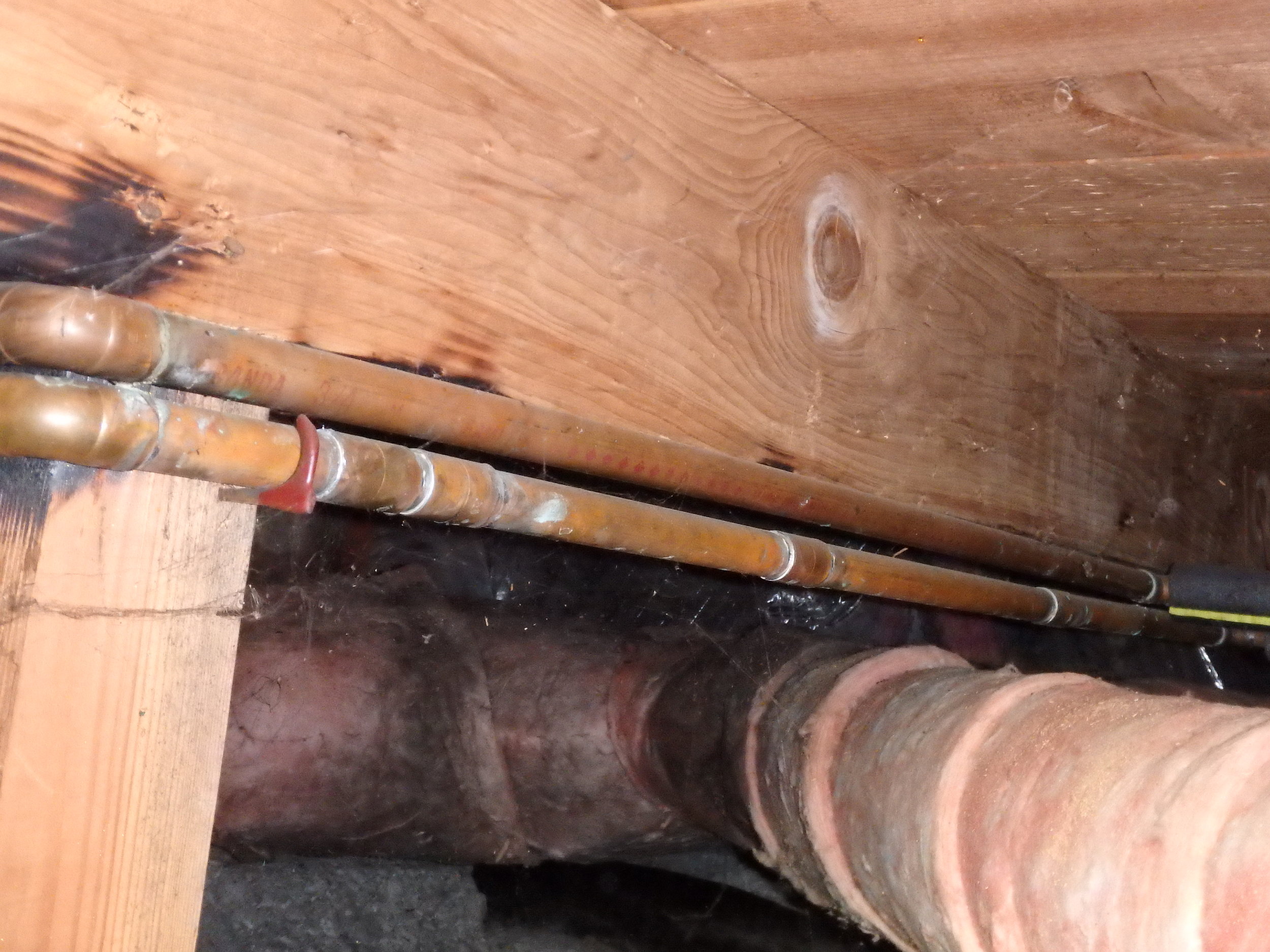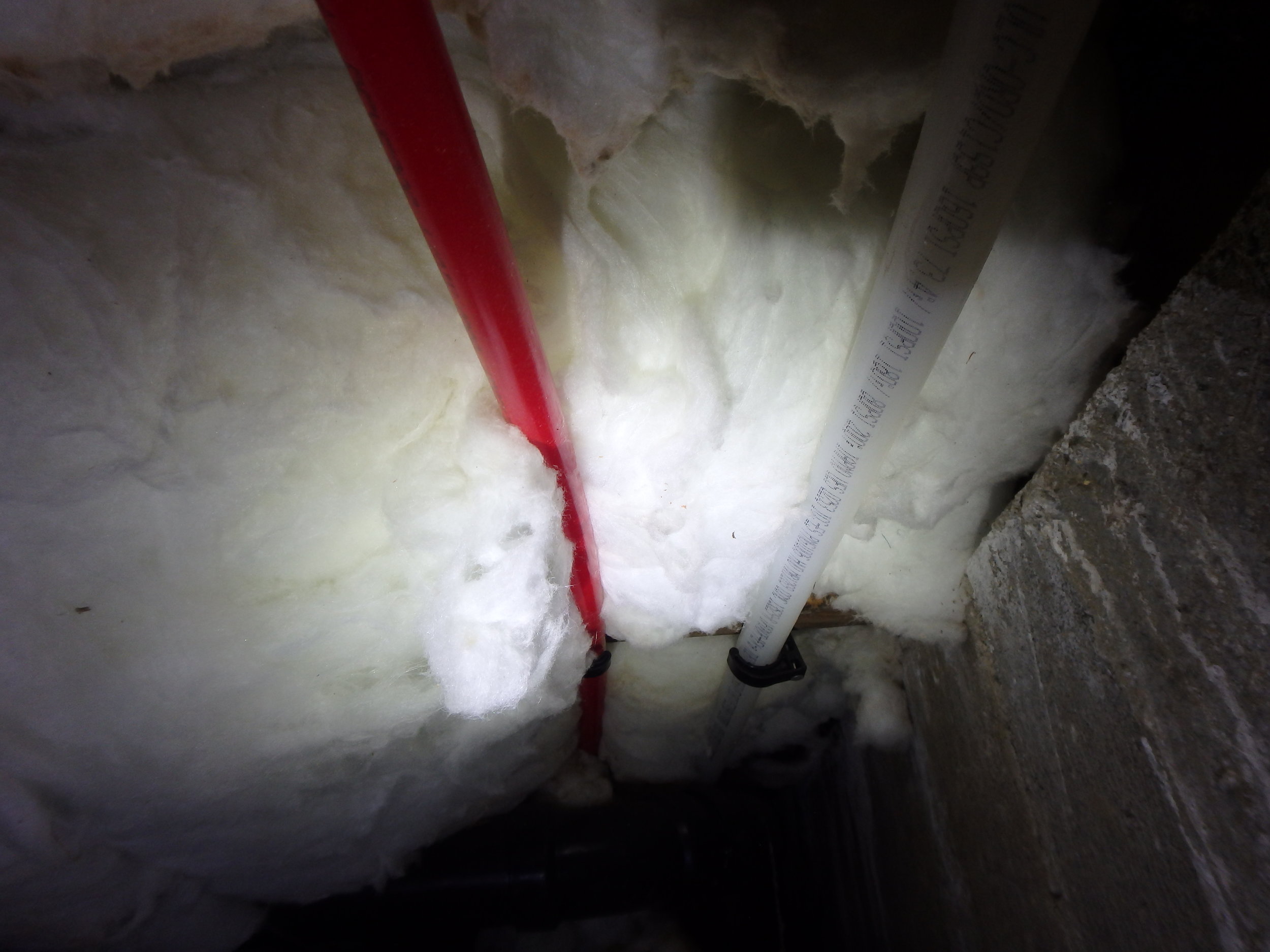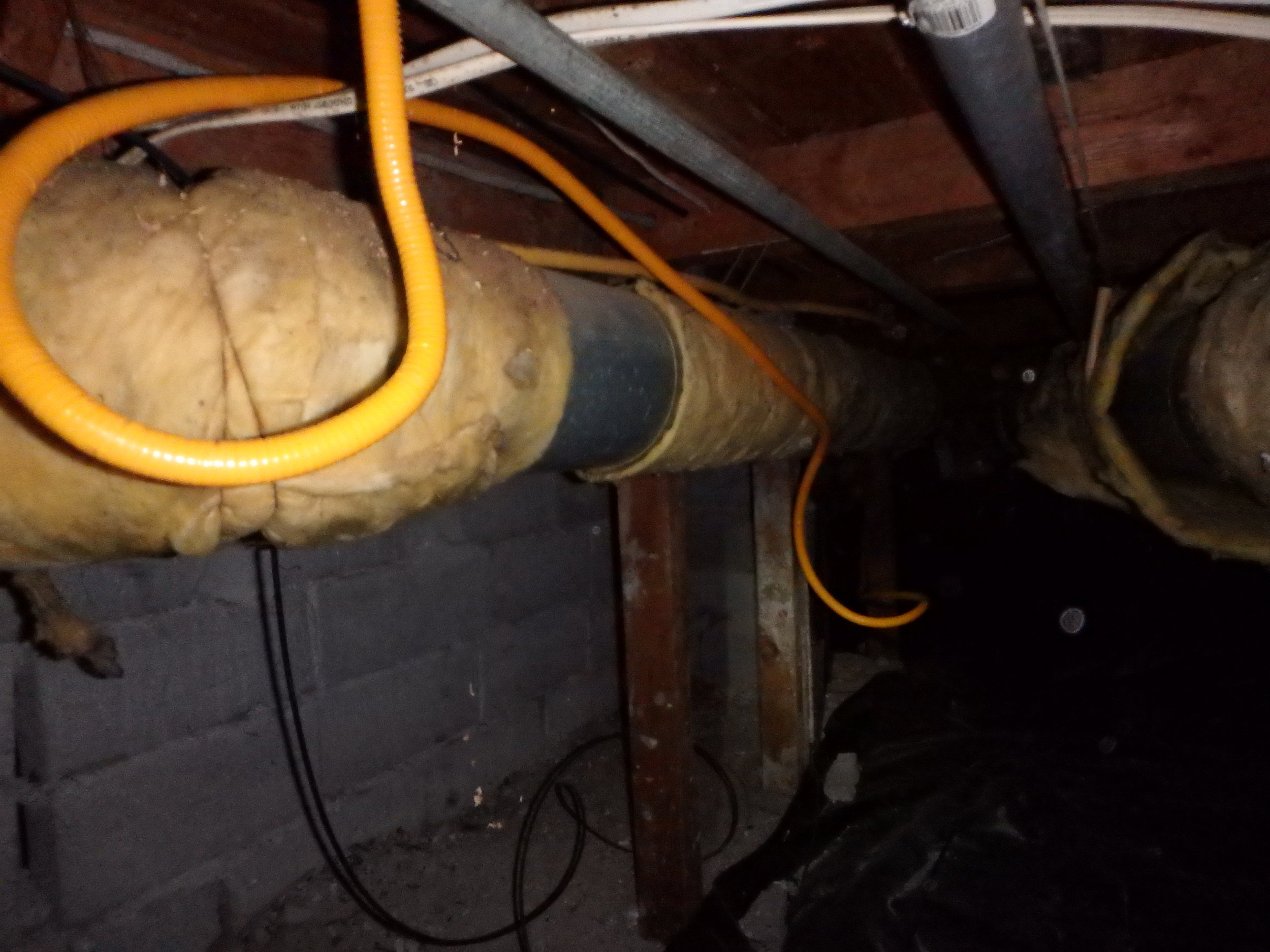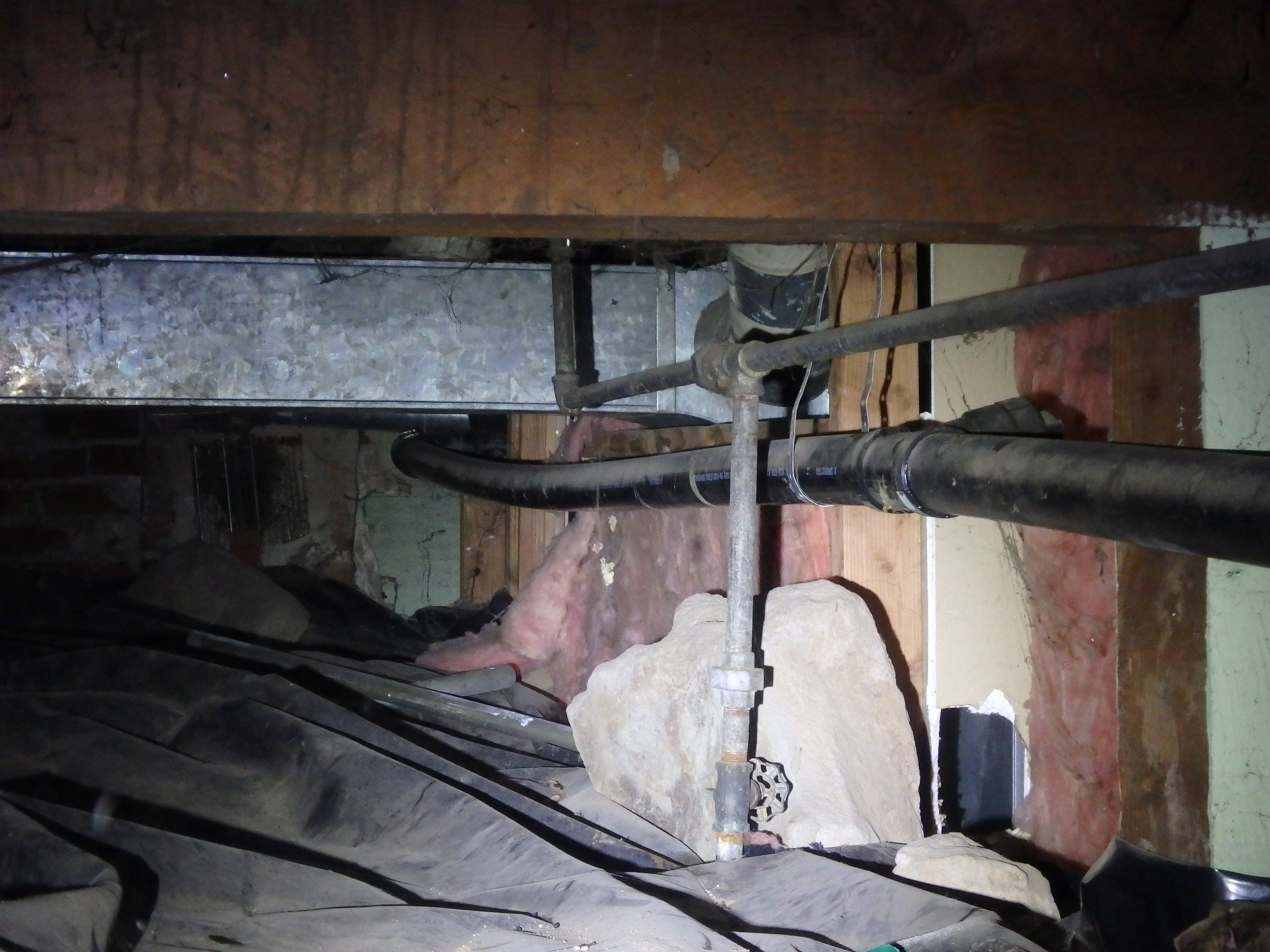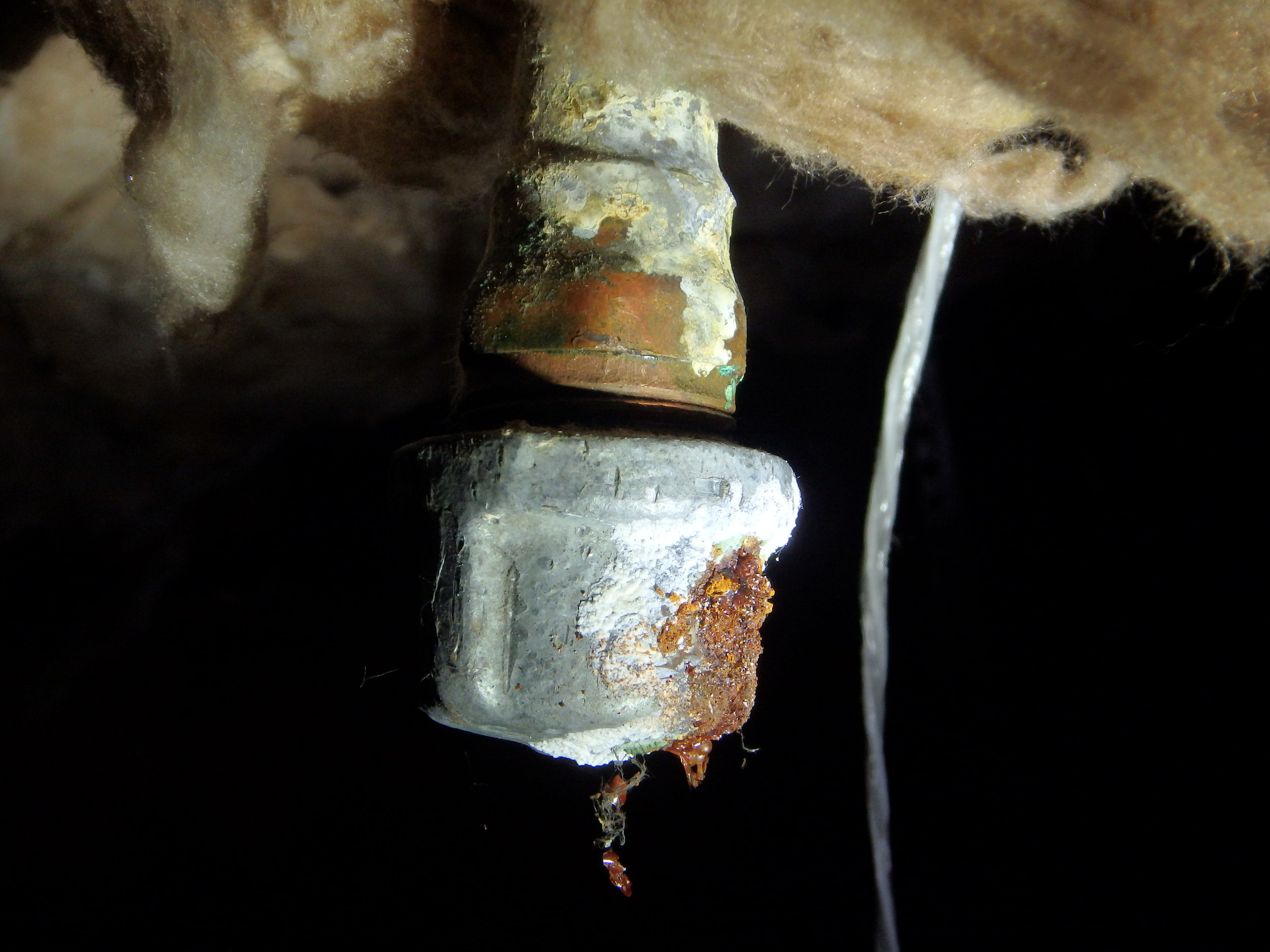Plumbing Defects
Proper installation and maintenance of the home’s plumbing system is vital in avoiding water damage. The concern is not limited to kitchens and bathrooms, as water distribution piping and drains typically run across much of the home in the crawlspace or basement. Plumbing defects in unfinished areas can go unrecognized for long periods, elevating moisture levels and increasing the risk of mold growth and wood rot.
Leaking Pipes & Fittings
Leaks are often found in water distribution piping and drain piping. Even small leaks can lead to damage to finished areas and an increased risk of mold growth in unfinished spaces. Tapes and sealants are not proper solutions to these leaks.
Corroded Galvanized Steel
Galvanized steel piping still remains in many older Portland houses. This material was once durable and reliable, however it has a tendency to corrode at threaded fittings. This corrosion can lead to leaks and restrictions in water flow. Most remaining galvanized steel water piping is at the end of its life.
Drains Issues
Sink, shower and tub drains become restricted over time and can require clearing occasionally. Leaks from sink and tub drains are very common. Flexible, corrugated (accordion) drains are more likely to clog and are not recommended, and drains with S-traps should be corrected.
Excessive Water pressure
Residential water pressure should not exceed 80 PSI. Too much pressure can put strain on piping and appliances, cause leaking faucets, and waste water. When water pressure exceeds 80 PSI, a pressure regulator on the water main is recommended.
Hose Bib Issues
Hose bibs on older homes are often outdated, lacking anti-siphon devices and freeze-proof features. Upgrading these older hose bibs is recommended. Additionally, hose bibs, whether old or new, can leak.
Other issues
Missing shutoffs at appliances
Uninsulated piping in unconditioned areas
Poorly supported piping
Dissimilar metals in direct contact
Failed wax rings at toilets
